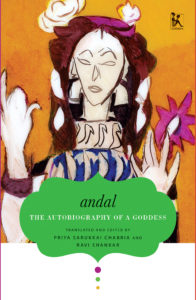ARCHIVE
Origin of the Kodavas
Our knowledge of the pre-history of Kodagu and the Kodavas is very scanty. There are no written documents or inscriptions from which we could deduce a credible story regarding the origin of the Kodavas. Even the history of Kodagu till the 17th century is very scanty and we find no mention of the Kodavas in the pages of the history of this period.
But many attempts have been made by various historians, anthropologists and others to unravel the mystery regarding the origin of the Kodavas. Especially after the advent of British rule in Kodagu many westerners and others have bestowed their attention on this subject. Having no written evidences or historic documents or stone inscriptions to probe their origin, efforts were made to unfathom the secret with the help of other material evidences that were available.
Pre-historic dolmens or burial cairns were found in Kodagu as in other parts of South India. Though these cairns throw some light on the life of those pre-historic-people, we cannot form an opinion as to who they were. Whether the remains that are found were of the Kodavas or that of the original inhabitants of this tract of land viz., Yeravas, Holeyas, Kudiyas, etc., is not clear.
The first discovery of the dolmens in large numbers was made by Lt. Mackenzie in 1868 on a bane near Virajpet. Capt. Rob Cole the then police superintendent of Kodagu followed it up and his excavations yielded interesting results. All the cairns found are either level with the ground or their tops crop up just a little out of it. When laid bare they present a stone chamber? of 7x4x5 feet composed of four upright granite slabs 7 or 8 inches thick and a cup stone with projects over the upright. The flooring is likewise of stone. The narrow front slab has an aperture of an irregular curve nearly two feet in diameter broken out from the top and generally facing east. Sometimes a compartment may be two-chambered. These cairns are either solitary or in groups, in some cases forming regular rows.
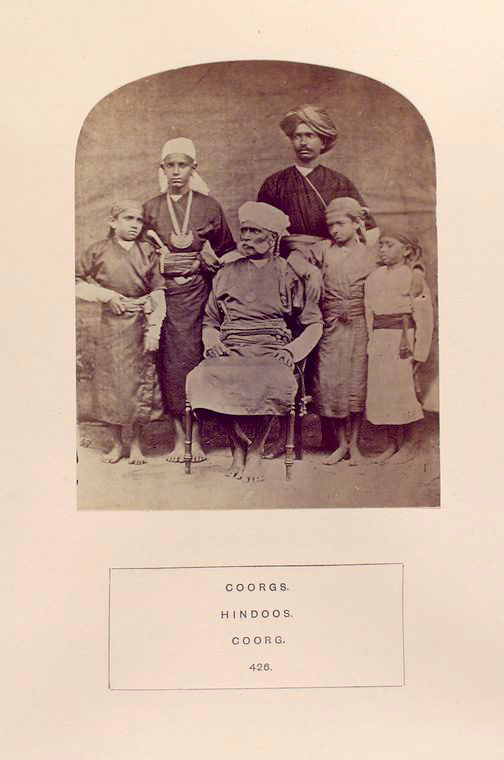
The relics found in them are peculiarly shaped pottery buried in the earth that nearly filled the chambers. These vessels contain earth, sand, bones, iron spearheads and beads. The pottery consists of chatties, and urns of burnt clay and is of a lead or black colour. They are smooth and shining and can hardly be said to be glazed. Bones, ashes and bits of charcoal are usually found at the bottom of the urns grains like paddy. ragi have also been found inside the chambers. Beads of red cornelian of cylindrical shape are occasionally met within the smaller pottery. The iron implements, spears and arrowheads are hardly distinguishable. These cairns apparently were resting places of the earthly remains, of a generation that existed anterior to the historical records of the present local races. The Kodavas call the dolmens as “pandukulis” or dwellings of the pandus. However, these pre-historic relics do not shed any light on the origin of the Kodavas.
Since the dawn of history the Kodavas are said to be the dominant community in Kodagu. The name of the land itself denotes that only after the advent of the Kodavas, the land took its name as Kodagu. Historians and other research scholars opine that the Kudiyas, Yerawas, and Kembatti Holeyas were perhaps living in Kodagu as the original inhabitants when the Kodavas came on the scene.
Since the dawn of history the Kodavas are said to be the dominant community in Kodagu. The name of the land itself denotes that only after the advent of the Kodavas, the land took its name as Kodagu. Historians and other research scholars opine that the Kudiyas, Yerawas, and Kembatti Holeyas were perhaps living in Kodagu as the original inhabitants when the Kodavas came on the scene.
The migration of Kodavas to Kodagu was set down by some of the European historians to the third century A.D. At that time according to them the servile or plebian class in Kodagu must have been composed of the Yeravas, Kurubas, Male-kudi yas and Holeyas. The Kodavas having conquered them formed themselves into an aristocracy.
The Kodagu inscriptions, copper plates and writings on palm leaves unearthed so far hardly throw any light on the Kodavas. However the first mention about the Kodavas was found in the Palpare inscription found in Nallur village in South Kodagu which is published in the Imperial Gazetteer of India 1908, vol XI. page 20, in which it is said.
“In 1174 Ballala II of Mysore sent his general Bettarasa to fight against the Chengalva king in Kodagu and in the fight that ensued at Palpare, Bettarasa was victorious and built a township at Palpare as his capital. But after some time Pemma Veerappa joined by Badigondeya Nandideva, Udayaditya of Kurchi and the Kodavas of all the nads marched against Palpare and attacked Bettarasa, who seems to have got the worst of it at first but was victorious.”
This inscription though does not shed any light on the Kodavas, gives an idea that the Kodavas were the dominant race in Kodagu during the 12th century. Though we are nowhere near the solution regarding the origin of the Kodavas we shall have a quick glimpse of the various efforts made by several books, people and researchers in quest of the object.
The first mention about the Kodavas was found in the Palpare inscription found in Nallur village in South Kodagu which is published in the Imperial Gazetteer of India 1908
The Cauvery Purana the oldest literature pertaining to the family deity of the Kodavas viz., Cauvery and the origin of river Cauvery after her, narrates that the Kodavas are the descendents of king Chandraverma of the Kadamba dynasty who ruled over Kodagu from the fourth century to the middle of the sixth century. Kadamba rule over Kodagu is recent and comprises subsequent history whereas Cauvery Purana dates back to a much earlier time. The Cauvery Purana mentions that when their family deity Cauvery transformed herself into the holy river, the Kodavas, of the land were present in good number and she blessed and assured them of her protective grace. This shows that the Kodavas were there before the birth of river Cauvery. This being purely a Puranic story we cannot base our findings on that and as Capt. Rob Cole rightly avers, the mythical nature of Cauvery Purana lacks credibility and it does not help us in any way in finding the origin of the Kodavas.
Col. Wilks in his book “History” expostulates the theory of the Kadambas and says that the Kodavas “descended from the conquering army of the Kadamba kings.” He further says that the first colonist were made out to have migrated from the Kadamba kingdom-Banavasi. Lewis Rice supports this view and says that it is consistent with what is known as the Kadamba history as corroborated by the modern annals of Kodagu: He expresses that the tales of Chandrashekhara, and Chitrashekhara as expounded by professor Wilson lend support to the same view.
Kadambas ruled over Karnataka from the third century A.D. to the middle of the sixth century. But we hear about Kodavas and Kodagu from a much earlier date even from the time of the Ramayana and Mahabharata that is, from the fourth or fifth century before Christ.
But we must note one important factor. The kings and chieftains who ruled over Kodagu were always aliens. A powerful chieftain or a king from outside comes with his army and invades a country, over-comes the opposition if any and establishes his suzerainty. With the invader some people of his ilk and a contingent of his soldiers may settle in the conquered land. But the majority of the people of the subdued land remains as they are. Thus the saga of conquests and establishment of kingdoms does not much change the ethnic and social structure of society.
The kings and chieftains who ruled over Kodagu were always aliens. A powerful chieftain or a king from outside comes with his army and invades a country, over-comes the opposition if any and establishes his suzerainty. With the invader some people of his ilk and a contingent of his soldiers may settle in the conquered land. But the majority of the people of the subdued land remains as they are. Thus the saga of conquests and establishment of kingdoms does not much change the ethnic and social structure of society.
The Kodava community had nothing to do with the Kadamba rulers or the subsequent ones. Whoever ruled Kodagu, the Kodava community maintained their separate identity, culture and customs as could be vouched from the recent happenings during Lingayat and British rule over Kodagu. Let alone the ethnic polarisation, the Kodavas were not influenced by the customs, mode of life, religious beliefs, dress etc.. of the rulers though there may be minor adaptations in the style of dress etc. Hence the Kadamba theory does not stand any charice of acceptance.
Some research scholars take back the advent of the Kodavas to the Mohenjodaro period. Attempts were made in the past to establish the existence of the Kodavas during the Vedic period. There is an assumption By Rev. Heras that there occurs the name of the Kodavas and some of the seals and references belonging to the pre-vedic (?) Mohenjodaro and Harappa culture refer to the Kodavas. But these are theories that are still in the realm of speculation.
Lt. P. Connor in his book “Memoirs of Kodagu survey (1817) says that the Kodavas themselves do not know anything about their origin. There is no trace of any helpful material to find out their origin of anything even to deduce a reasonable and convincing assumption. Though there are no historical data or evidences to establish their origin, there is no doubt that the Ködavas are one of the oldest races. Their land being a forest-ridden area with no outside contact and moreover, there being nothing attractive to arrest the covetous eyes of conquerors and even if anyone attempted the forbidding hilly terrain inclement weather and the heavy monsoon completely thwarted and made outside conquest well nigh impossible. As such it remained for years cut off from the external world and the face preserved its purity, its customs, traditions and culture unsullied.
Sri Erskine Perry who also failed to establish the origin of the Ködavas points out that “the Kodavas have no resemblance to any of the races of south India and that it clearly indicates that they must have come from outside“. He also describes that the kodavas are by far the finest race he had seen in India in point of independent bearing good looks and all the outward signs of well-being”.
Sri Erskine Perry who also failed to establish the origin of the Ködavas points out that “the Kodavas have no resemblance to any of the races of south India and that it clearly indicates that they must have come from outside”. He also describes that the kodavas are by far the finest race he had seen in India in point of independent bearing good looks and all the outward signs of well-being”.
Mr. L. A. Krishna Iyer in his book, “The Coorg Tribes and Castes writes that “their (Kodavas) mode of life, pride of race, impart in their whole being an air of manly independence and dignified self-assertion, well sustained by their peculiar and picturesque costumes”. Giving the maximum and minimum and the average státure and cephalic and nasal indices he concludes that “they bear no comparison with the other races of South India”. He says that “the Kodavas have a finer nose, a larger head with a distinct tendency towards brachyce phalism. Their average cephalic index is 80.6 and the nasal Index 65.2”. Giving all these details Mr. Krishna Iyer also fails to unravel the origin of the Kodavas.
Mr. Abdul Gaffar Khan who wrote a book entitled “Kodavaru Arabiyaru” (Kodavas are Arabs) assumes that the Kodavast must have migrated from Arabia. Though he does not substantiate his assumption with any reliable data he simply bases his findings on the similarity of the mode of dresses between them, This does not justify as sufficient evidence to establish the origin of a race. As a matter of fact dress patterns change from time to time and place to place according to weather and other conditions. Hence the mode of dresses can hardly be the basis to ascertain the origin of any community. We know that the Kashmiris and some tribes who live in the Himalayan region do wear dresses closely resembling the dress pattern of the Kodavas and by no stretch of imagination could one conclude that they belong to the ethnic group of the Kodavas.
Some of the educated Kodavas claim that they are the descendants of the Pandavas of Mahabharata and cite in support some of the social customs like the younger brother marrying the widow of the elder brother etc. One need not say that these are decidedly very flimsy and unreliable grounds to determine the identity of a community.
Some of the educated Kodavas claim that they are the descendants of the Pandavas of Mahabharata and cite in support some of the social customs like the younger brother marrying the widow of the elder brother etc.
Some modern research workers have classified the Kodavas with the Todas of Nilgiris, the Caucasians of the country around mount Caucasus in Russia. Some others have classified them with the Kapalas, one of the original inhabitants of Kodagu. Mr. Herbutt Rishely opines that “the Scythians (an Asian nomadic people of Asia) who were residing in the Balkans region during the fifth or the sixth century were forced by their neighbors, the Yuvachi community to migrate to the East and settle in Punjab. They built a new kingdom in Punjab. The people with bigger heads, taller physique and longer limbs who are found in the region comprising Western Punjab to South Deccan were said to be the descendants of these Scythians. At that time cattle-raring being the principal occupation, they migrated with their herds of cattle in search of grazing plains and that is how, we find their progeny viz.. the people with larger heads, longer limbs and taller physique scattered along the western ghats and especially in Kodagu.”
Some recent research workers are definite about the Kodavas coming from the Dravidian stock. Though almost all the recognised anthropologists are unanimous in denouncing this assumption yet the protagonists of Dravidian theory argue that the Kodavas and the Todas of Nilgiris belong to the same ethnic group of the Dravidian family. They say that their traits are biologically useful and related to mental capacity and intellectual endowment. They further say that the mountainous habitat, climate, food, contact with Western races are responsible for what the Kodavas are today and these factors have differentiated them from the people of the plains. They argue that the jungles of Kodagu satisfied their highly developed propensities of hunting and outward life and they were noted for their predatory excursions into the country of their wealthier and less war-like neighbours. It is their conclusion that these traits are still with them and even at the present time they revel in their fighting and sporting qualities, which have ample scope in their socio and religious ceremonies and customs.
There are others who are of definite opinion that the Kodava language is nothing but a mixture of the Southern languages of the Dravidian group and on that basis they are definite that the Kodavas belong to the Dravidian heritage. They further say that if the Kodavas had come from the North or elsewhere they should atleast have had their own language, but in reality Kodava language is only a dialect a mixture of Dravidian languages. They quote Richtor to substantiate that the “Kodava language has a close relationship with the other Dravidian languages, but being neither cultivated beyond its colloquial use, nor possessing any original literature, it hardly deserves the distinction of being elevated into a special Dravidian language”.
These arguments of the Dravidian enthusiasts come in the realm of speculation and hardly can be reckoned as reliable data. The martial tradition of the Kodavas, the rugged nature of their home-land and the inevitable battles they had to wage against the wild animals and out-ward enemies, the inhospitable conditions of the forest area account for their highly developed martial traits but in no way or at any time they were the predators who invaded their docile neighbouring countries for loot or lucre. Their history is replete with events of high propriety, orderly behaviour and ideal neighborliness.
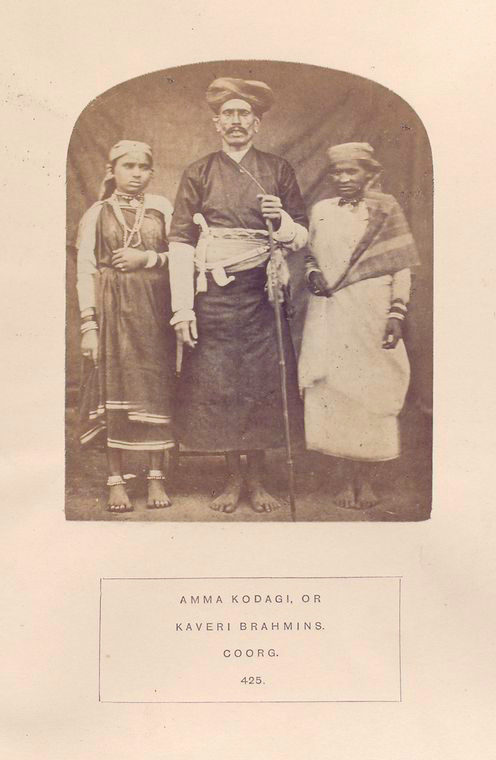
Regarding the issue concerning their language it is pertinent to ask the Dravidian enthusiasts as to why the Kodavas-a microscopic little community-instead of speaking one of the languages of the Southern group should speak a different language? The fact that Kodava language consists of many words and traits of the neighbouring languages does not disprove that it is an original language. Some of the recent linguists, who have done sufficient research on this language and published the grammar and compiled a vocabulary for the language say that it has many traits which we don’t find in the other Dravidian languages. They also are definite that Kodava language is of great antiquity and even older than Malayalam. As this issue is discussed at length, elsewhere in the book, it is sufficient to say here that languages which are always changing and which absorb words freely from contemporary other languages are not reliable data to determine the origin of any race or community. Once upon a time our ancestors were speaking Samskritha and it was the original language of our country but today it has yeilded place to other languages. But it does not mean that Samskritha was not the dominant and mother-tongue in our land.
The so-called authorities who easily tag the Kodava community to this or that ethnological group in South India must explain as to how a small community numbering within a lakh of people could develop and maintain a special mode of dress, a unique culture, a special way of life, a different language in spite of the heterogeneous influx and pressure of other major forces that dominated the South during the millennium. They must explain how this microscopic community could build up a tradition, which is markedly different from those of their neighbours.
The so-called authorities who easily tag the Kodava community to this or that ethnological group in South India must explain as to how a small community numbering within a lakh of people could develop and maintain a special mode of dress, a unique culture, a special way of life, a different language in spite of the heterogeneous influx and pressure of other major forces that dominated the South during the millennium.
The time of the settlement of the Kodavas in Kodagu is also a point of uncertainty. There are people who argue that the Kodavas lived during the Mohenjodaro and Harappa culture and must have migrated to the South at that time, The Indus Valley Civilization is said to have thrived for thousand years from 2500.B.C According to modern dating this is prior to the happenings of the epics Mahabharata and Ramayana. They say that there is the mention of “Kroda Desha” in Mahabharata and it refers to Kodagu only. This can only be an assumption and does not stand any scientific scrutiny. However there are certain credible assumptions to show that the Kodavas must have migrated to Kodagu much before the Christian era.
We know from history about the Greek invasion of India during the rule of Chandragupta Maurya. Alexander of Greece with an army of 40, 000 men, with the intension of conquering the world marched towards India. He crossed the Hindu-Kush and wanted to conquer Maghada (Southern part of Bihor). He had heard about this powerful kingdom and its wealth and grandeur. But the soldiers of Alexander refused to go further and he had to abandon his march appointing Selukus his general to rule over the conquered kingdoms. Selukus and his fellow soldiers settled down in a country called Bactria. After sometime when they saw that there were no powerful rulers they came down and conquered Punjab and ruled that part of the country for over a hundred years. One of their kings was Menander. Hel was a wise and good king. He was completely taken by the life and philosophy of the Indians and adopted Indian ways of life and called himself an Indian. His followers also adopted Indian ways of life and became Indians, and in the course of time they mingled with the local people giving rise to a new community with broader heads taller stature and sturdier limbs.
We know from history that when Alexander withdrew from India leaving Selukus, Chandragupta Maurya, the young and powerful king who wanted to be an empire builder like Alexander, himself, fought against Selukus, defeated him and married his daughter. Thus we see a fusion of races. How this new race came down to the South is corroborated by various historians.
“What is the earliest date in the historical period when the South came into contact with the North? The answer to this question is not very precise. Of course we have Ashoka’s inscriptions located in the various parts of Karnataka, but what about the pre-Ashokan period? Certain epigraphs of the 12th and 13th centuries in the Kannada language found in the Shimoga district refer to the rule of Nandas over Karnataka. We know that Ashoka conquered Kalinga but who among the Mauryan kings conquered the South is not known. Prof. Nilakanta Sastri suggests that the Mauryans came by their southern possessions as a matter of course by over-whelming the Nandas. The coming of Chandragupta Maurya to Sravanabelagola with his teacher Bhadrabhahu is well-known. The smaller hill at Sravanabelagola where the teacher and the pupil lived is referred to as Katavapura and Chandragupta lived here for twelve years after his guru’s death and the place is named after him as Chandragiri” (Karnataka through the Ages, page 99).
“Bindusara son of Chandragupta ruled in the South (298 272 B.C.) including certain portions of Mysore then known as Mahismamandala. This fact has been conceded by historians on the basis of Taranath the tibetan historian and Mamoolnar the Tamil poet. We have ample proof of the sway of Ashokan rule in the shape of pillars and rock edicts at Brahmagiri and other places of Chitradurga and other districts. The Brahmagiri excavations by the Archaeological Survey of Mysore in 1939 and the Archaeological Survey of India in 1947 respectively have amply unearthed objects belonging to the Mauryan period. Sir Mortimer Wheeler excavated some of the megalithic burials at Brahmagiri and dated them to the period of Ashoka. It is significant to note that the megalithic monuments are locally known as Mauryana” or “Morera mane” by the people thus associating them with the Mauryas”.
This conclusively proves that there was migration of the people of the North to the South as far back as the Mauryan period i.e,. round about 200 years before the Christian era. As explained above the inter-mixing of the Greeks, Indians, and the Pahalavas of Persia gave rise to a new community known as the Aryans. The word Arya in Samskritha means noble. This mingling gave rise to a new ethnic group of Aryans with bigger heads, taller stature, longer and sturdier limbs, grecian nose and special cephalic indices other than the local population,
The people being nomadic were moving from place to place with their cattle in search of grazing grounds gradually moved South. With the extension of the Mauryan Empire till Mysore (Mahishamandala) these sturdy people settled along the Western coast as far as Kodagu.
The people being nomadic were moving from place to place with their cattle in search of grazing grounds gradually moved South. With the extension of the Mauryan Empire till Mysore (Mahishamandala) these sturdy people settled along the Western coast as far as Kodagu.
Dr. J. H. Hutton states that, “it appears to be a much simpler and more satisfactory view to regard this stock of people as Aryans. We may suppose them to have migrated to the South and to have extended down to the West Coast as far as Kodagu forming the physical basis of several of the brachycephalic or mesatocephalic groups of Western India,”
From the above it can be safely inferred that the progenitors of the Kodava community have come from Aryan stock (Greek Indian mixture) and they migrated and settled along the Western Ghats and Kodagu at about 200 B.C. that is during the rule of the Mauryan dynasty. This brachycephalic stock which settled along the many parts of Western India could not maintain its identity as it was gradually absorbed by the local groups though we find people of longer heads, taller stature with Grecian noses here and there. But those groups who settled in Kodagu have maintained their specialities and separate entity to some extent as to be distinguished from the others. This was possible because of the mountainous and forest nature of Kodagu and the lack of communcation and outside contact with the nighbouring groups of the South. As outer contact increased this process of assimilation is being accelerated and it is but natural that in the present mode of life, and inter-mingling, the Kodava way of life, language, etc have been much influenced by the neighbours. Though this process is going on, the small community of the Kodavas have maintained their separate identity, culture, customs and other social traits with zealous care.
From the above it can be safely inferred that the progenitors of the Kodava community have come from Aryan stock (Greek Indian mixture) and they migrated and settled along the Western Ghats and Kodagu at about 200 B.C. that is during the rule of the Mauryan dynasty.
It is estimated that there are in India about three thousand different communities. Among them perhaps the Kodavas are one of the smallest numbering not even a lakh. This microscopic community with its great cultural tradition, with its high water mark of independence, integrity and valour has etched an indelible mark in the annals of Indian history.
This excerpt has been carried from B.D. Ganapathy’s Kodavas.
ARCHIVE
PREFACE
Andal’s life and legend is so completely founded in the divine that merely thinking of translating Andal ought to make one speechless, struck with ineffability. Additionally, the genre of ancient Tamil poetry to which the Thiruppavai and the Naciyar Thirumoli belong is said to incorporate inner spaces, hidden meanings. How, then, might a translator go about the task of translating Andal, if one dares at all? Priya Sarukkai Chabbria and Ravi Shankar seem to derive their translation strategy from this openfield in Andal’s poetics.
There are two Andals in this book: Priya’s Andal, and Ravi’s Andal. The two translators do not divide Andal, they share her entirely, translating the same poems. Reading their translations one after another may alarm a reader who has dogmatic expectations of translations, or fixed ideas about fidelity; she may stop and wonder, which is the ‘real’ translation, which particular, ‘true’? Are Andal’s breasts in Pasuram 8 the ‘full hills’ of Priya’s translation or supple ‘upturned blossoms’ of Ravi’s?
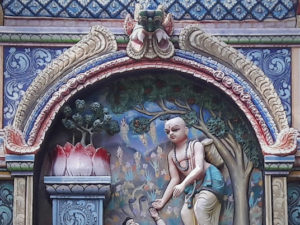
Recognising the distinct styles and divergent translations of Priya and Ravi calls to mind the story of the Septuagint, where seventy-two translators come up with an identical translation of the Hebrew Bible. While this example is usually cited to establish the authenticity and the fidelity of that translation, it has always raised for me another question, the reality of the process. Can the translator be said to exist, if she is transparent? Even Anne Carson, whose exacting translation of Sappho places us as if right next to a poem fragment on an ancient papyrus, admits: “I like to think that, the more I stand out of the way, the more Sappho shows through. This is an amiable fantasy (transparency of self) within which most translators labor.” Every translator has a unique lens. This is not just about interpretation, an intellectual activity, this is also about personality, personal history, biography. An Urdu couplet explains it well: Ishq ki chot toh padti hi har dil pe iksaan. Zarf ke farq se avaaz badal jati hai. ‘The strike or the hurt of love falls the same way on each heart/mind, but depending on the material (i.e., nature, character, what stuff the person is made of) it sounds different.’ We must expect translations to be individual, otherwise the task of the translator may as well be the ‘task of the computer,’ or even the ‘task of the dictionary.’
Andal’s life and legend is so completely founded in the divine that merely thinking of translating Andal ought to make one speechless, struck with ineffability. Additionally, the genre of ancient Tamil poetry to which the Thiruppavai and the Naciyar Thirumoli belong is said to incorporate inner spaces, hidden meanings.
Priya uses imperatives (‘come, make this vow’), nouns as verbs (‘to hymn his magic’), and graphic images (‘lightning nerved air’) for a translation charged with momentum and force. Her triptych in Nachiyar is an enactment (abhinaya) much like in a dance-drama, where a statement is presented once, and then again, and then again, slightly different each time, the rasa more heightened. Assuming the first part is most literal, or as literal as you can get with Andal, and the second stanza yet another translation or telling, carrying an echo or trace of the first, the third stanza is a mutter, a trailing off, an entry into the psyche of Andal and the translator so impacted that she continues to voice her, not quite consciously. Ravi’s translation startles expectations that we may have of men-translators translating a woman-poet. In Take Me to the Land of My Lord, Andal asks, ‘[l]eave me there on my haunches,’ the limbs of Hrisikesa (Krishna) ‘quivering in time like a veena string’ – his translation embodies Andal. Ravi also circumambulates the ideas and images of a poem with each stanza, but works his imaginary into a smooth, narrative flow. Both translators bring us the textures of Tamil; whereas Ravi intersperses Tamil words in his translation, Priya’s English itself seems shaped by the source language. Their two Andals walk alongside. If Priya’s Thiruppavai is solemn, chant-like, Ravi’s Thiruppavai is conversational. Priya tells us that the gopis’ hands are too small to enclose the udders of the cows. Ravi tells us the udders groan to fill the pots. Two sets of eyes trained on the scene, the vision of the reader gains depth; and returning to the same poems from two different angles that are also rich spectrums in themselves drives the reader into the deep, of Andal. While Priya and Ravi respond to Andal, they also seem to respond to each other. What Ravi presents in Dark Flower expands into a bouquet in Priya, or perhaps Priya first shows us the flowers, and then Ravi the bunch? The collaborative strategy has an expansive effect, it is Andal who proliferates.
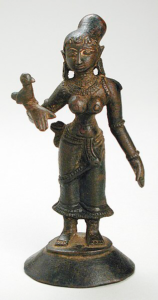
In order to appreciate, understand, or just locate the methodology of this Andal translation, it is useful to consider the conventions of how a ‘text’ or a source thrives in the Indian tradition. When we find railway metaphors in a song attributed to circa 15th century Kabir, we know that the corpus of Kabir represents an imaginary, Kabir songs pay homage to the collective idea of Kabir. And we do not split hairs over the definition of the Tulsidas Ramayana, wonder whether it is a translation, version, adaptation, creative translation, transcreation, retelling or commentary. It is multiplicity that achieves the transmission and continuity of source texts, whether oral, or written. Texts that we think of as ‘fixed’ also assimilate the voices of readers. Look at the tradition of Gita dissemination—it has relied, and continues to rely, on people who study, recite, translate, explain and comment on the Gita while drawing from previous commentaries (bhasyas). It is only in the context of modern book-culture that we expect a Gita translation to be the ‘representation’ of a source text, and expect commentary within footnotes and with reduced emphasis. And if we do not regard many Gita translations as many Gitas, that is a comment on our expectations of translations, and on our naiveté about interpretation, not on a translation’s management of fidelity.
In order to appreciate, understand, or just locate the methodology of this Andal translation, it is useful to consider the conventions of how a ‘text’ or a source thrives in the Indian tradition. When we find railway metaphors in a song attributed to circa 15th century Kabir, we know that the corpus of Kabir represents an imaginary, Kabir songs pay homage to the collective idea of Kabir.
Then the bhakti tradition admits intuition as methodology. In The Flute Calls Still, Dilip Kumar Roy writes about Indira Devi who became his disciple in 1949 in Pondicherry. Indira was such an intense seeker and bhakta, devotional singing sessions sent her into trances. She had visions of Mirabai singing in “a voice throbbing with “love’s yearning and pain,” recalled and wrote down these songs, and sang them. Commenting on this phenomenon, Sri Aurobindo (who was Roy’s guru) said, it was evident that “her consciousness and the consciousness of Mira are collaborating on some plane superconscient to the ordinary human mind.”
This book is a translation that must also be located within this Indic tradition, deriving its freedoms from it. It is a conversation with a mystic text, and must be appraised as one. Priya and Ravi utilize a range of methodologies from past and contemporary rubrics of translation, they are Indian and not only Indian, they are translators and poets besides, they work from Andal’s text and over and above, they translate, and they do more. Dear reader, may you be open to Andal in all sorts of ways.
– Mani Rao
INTRODUCTION
Andal and her Poetry
Andal (often referred to as Andal/Aandaal or Antal), the 9th-century mystic poet was elevated to goddess status within a few centuries of her birth in the southern Indian state of Tamil Nadu. She was the only woman among the twelve medieval Vaishnava saints, known as the Alvars who ‘dived deep and drowned themselves in the love of god’ implying their complete devotion to Vishnu-Narayana, one of three main deities in the Hindu pantheon, often called Tirumal, The Sacred Dark One, in Tamil. Unlike other mystics Andal is unique in demanding to be taken as bride by Vishnu not as spirit but as a living maiden. Legend goes that when she was around sixteen she merged with her god at his temple in Srirangam, Tamil Nadu. Since then she has existed as myth and deity.
The Alvars, along with their counterparts, the Siva-worshipping Nayanmars, are the earliest proponents of the bhakti movement, a devotional and socially radical form of worship that emerged in medieval India which emphasized the quality of god as saulabhyam, or easily accessible to all. This celebration of personal prayer stressed composing in the poets’ mother tongue –as against Brahminic Sanskrit – some see it as striking against the caste system. Even as kings ‘re-converted’ to Hindu faith, the bhakti movement became a popular force instrumental in the retreat of wealthy Buddhist and Jain sects and, simultaneously, curtailed Brahmin monopoly on religion.
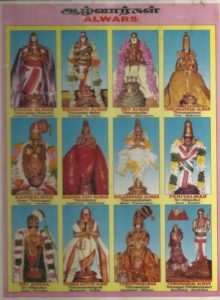
Andal’s first work – composed when she was about thirteen – the Tiruppavai (The Path to Krishna) is a lyrical description of the vows undertaken by young women to obtain a good husband; it is a song of congregational worship. In her second and last work, Nacciyar Tirumoli (The Sacred Songs of The Lady), Andal sings of her individual need for spiritual and sexual congress with her chosen god and of an abundant female desire explicitly sited in the body which too is holy. The Tiruppavai and the Nacciyar Tirumoli are included in the circa 11th century compilation Nalayira Divya Prabandham (Four Thousand Divine Compositions) that Tamil Srivaishanvas consider on par with the Sanskrit Vedas. The compilation’s literal translation is ‘Four’ (nali) ‘Thousand’ (aayiram) ‘Divine’ (divya) ‘affection’ (pra) ‘bonding’ (bandham) again is indicative of the Alwars’ intimacy of address to Vishnu-Narayana.
Andal calls to Vishnu, The Pervader, the cohesive principle of sattva, supreme illumination. The Brhad-devata (2.69.[213]) suggests his name may originate in the Sanskrit root vis which means to spread, to enter and to surround. “Having created the universe, he entered it” states the Taittiriya Upanishad (1.2.6. [274]). In Vaishnava theology, Vishnu is the Self in all of life and manifests endlessly in the world of forms and orders of creation, “just as from an inexhaustible lake thousands of streams flow on all sides” to guide and protect creation. Vishnu is prayed to as Hari, Remover of Sorrow and Illusions which is especially poignant in Andal’s case as she beseeches him time and again to accept and to save her. She addresses him variously: as Narayana (who moves on causal waters on the serpent Seshnaga), as Narayana Nampi (Universal Abode), Tirumal or Mal (The Dark One of Tamil theology) and through seven of his ten prominent avatars. But most often she addresses him as Krishna, divine child and lover.
Andal (often referred to as Andal/Aandaal or Antal), the 9th-century mystic poet was elevated to goddess status within a few centuries of her birth in the southern Indian state of Tamil Nadu. She was the only woman among the twelve medieval Vaishnava saints, known as the Alvars who ‘dived deep and drowned themselves in the love of god’ implying their complete devotion to Vishnu-Narayana, one of three main deities in the Hindu pantheon, often called Tirumal, The Sacred Dark One, in Tamil.
Each of Andal’s pasurams (songs) is drenched in the way the sacred is embedded in every material that constitutes ephemeral life; at the same time she summons timeless grace, arul, to illumine her. Her work calls to question all markers of identity and boundaries as she passionately sings for bliss to enter her body and spirit. When we receive Andal, we must keep her youthfulness in mind. She conflates extreme violence with swooning surrender; splices the desires of the sexual body with visions of cosmic temporality. Yet we refrain from applying the term ‘transgressive’ to Andal as it suggests a deliberate breaking of rules. It appears she did not bother with any social conventions or rules at all – except those of poetry.
From Saint-Poet to Goddess and Teen Icon
Andal’s first work – composed when she was about thirteen – the Tiruppavai (The Path to Krishna) is a lyrical description of the vows undertaken by young women to obtain a good husband; it is a song of congregational worship. In her second and last work, Nacciyar Tirumoli (The Sacred Songs of The Lady), Andal sings of her individual need for spiritual and sexual congress with her chosen god and of an abundant female desire explicitly sited in the body which too is holy. Andal eventually would become a teenage saint-poet and then a goddess, when she became Vishnu’s consort, famously rejecting any marriage to a mortal man, considering herself betrothed to the divine.
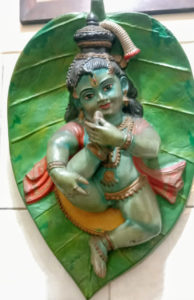
Performative interpretations of Andal’s life of an all-surrendering love and passionate piety are enacted in Chennai during the annual music and dance festival as ‘high’ art, as also in films and popular TV dramas. Dingy roadside photo studios exhibit saturated images of girls in their coming-of-age ceremony dressed as Andal in vibrant silk saris, flower garlanded, hair dressed in a small bun on the right and then left to cascade. (The girls are also photographed variably as faux geishas, in salvar-kameez ‘suits’, as Bollywood starlets in jeans and spangling tops etc, thereby co-opting every current image of desirability. The Andal iconographic image, however, is a constant.) Perhaps the photographs imply that each girl is a fit bride for a god or perhaps they are shaded with upper caste aspirations, but it seems possible that there is a more powerful and unfathomed cultural imagination at work 13 centuries after Andal’s brief life.
Andal’s first work – composed when she was about thirteen – the Tiruppavai (The Path to Krishna) is a lyrical description of the vows undertaken by young women to obtain a good husband; it is a song of congregational worship. In her second and last work, Nacciyar Tirumoli (The Sacred Songs of The Lady), Andal sings of her individual need for spiritual and sexual congress with her chosen god and of an abundant female desire explicitly sited in the body which too is holy.
Andal’s first work, Tiruppavai (The Path to Krishna) is famed in Southern India, especially Tamil Nadu and sung by devotees during the sacred month of Markali. It is a lyrical and bhakti-filled description of vows undertaken by young women to obtain a good husband and is a song of congregational worship. However, in the later Nacciyar Tirumoli (The Sacred Songs of the Lady), Andal sings of her individual need for sexual congress with her chosen god. Except for Hymn Six – which elucidates her dreams of the marriage rituals and is sung at weddings even today – the other 13 hymns are not as often heard, perhaps because they speak of an abundant female desire explicitly sited in the body. Similar to the Gnostic texts which were omitted from what is commonly referred to as the Judeo-Christian Bible for their more overt sexual symbolism and heterodoxy which verged on the heretical, many of Andal’s hymns from the Nacciyar Tirumoli are considered by many (though not by us) to be ‘transgressive’.
Prismatic Soundings
We, the two translators of this project, are poets ourselves and so approach the translation with neither a historiographical nor theological approach, but rather a poetic one that sees her utterances as songs that need an innovative approach in order to sing fully in English. Priya grew up hearing Andal’s collection of hymns sung at weddings and festivals. For decades, the holy-poet-become-goddess hovered in her imagination like a cloud over the sea, nebulous yet lit on the horizon of the liminal, until one day she decided the goddess must land on the shore of her first language: English. At this time she met Ravi Shankar, the Indian American poet and professor, who shared her passion for Tamil literature and Andal in particular.
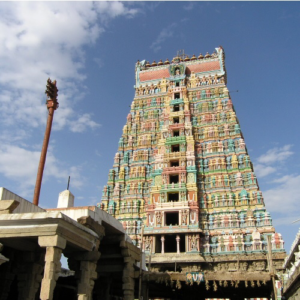
That’s how the two of us became collaborators and in working together, we realized that a new approach was necessary if we were to do justice to the richness and spiritual intensity of these poems. Our intention is to make the poems come alive in English and so we dispensed with attempting a literal translation, verging instead into a polyphonous mode of capturing the multiplicity inherent in Andal’s songs by experimenting with form and sometimes including multiple versions of the same poem, as well as more collaborative translations. We spoke about our aspirations for this project to the elder of the two scholar-poets whom we consulted for help with the manuscript, octogenarian S.V. Seshadri, who helped us understand the complexity of Tamil Sangam era (2 BCE–2 CE) poetics in which Andal composed.
Andal’s first work, Tiruppavai (The Path to Krishna) is famed in Southern India, especially Tamil Nadu and sung by devotees during the sacred month of Markali. It is a lyrical and bhakti-filled description of vows undertaken by young women to obtain a good husband and is a song of congregational worship.
To provide a sense of the difficulty in translating Old Tamil, consider the following saying, poem and verse which present conundrums because of specific poetic codes and suggested ‘unmarked’ meanings compressed in each.
- ‘If you wish to destroy a thorn tree, call for the axe.’
- When told of her lover’s interest in another woman she smiled and said:
Drunk
with honey
from the opening lotus
pond the bee flies
to its hive in the sandalwood grove.
- Bring me his garments translucent, yellow, shimmering
as pollen through which the dark majesty of his thighs rise
glistening and drape me in his scent
so my every pore is perfumed. Then shall I be content!
The meanings of these three distinctive utterances need contextual clues in order to be unravelled. The first is an epigram that translates as words of advice:
If you wish to kill your enemy, O king, do so quickly.
The second is a secular poem in which the woman implies that her lover enjoys her deeply, mutually as she enjoys him, that their love is sweet and as fresh and pure as blossoming lotuses whose roots are deep and entwined as their vows to each other and that he will carry her love with him as faithfully as a bee returning to its hive as he journeys to his home high on the hill far away, and that their love will remain fragrant and long lasting as sandalwood until he returns to her.
The third is a sacred hymn that follows the rules of Old Tamil prosody in making a similar, yet very different erotic demand. Unlike the earlier poem, its desires are not veiled in symbolic allegory. But while it seems direct, it could misdirect, for the desired ‘he’ is not a mortal, but the Protector of Universes, the dreaming Vishnu, who, in the starry cosmic ocean, rests on the cloud-coloured serpent Ananta, who represents ‘the eternity of time’s endless revolutions’. The speaker of this verse is Andal who was possibly fifteen at the time. This instance of sexual and devotional intensity is from the Nacciyar Tirumoli, Song Thirteen, verse one. In theological terms, the yellow silk is often interpreted as the veiling of the sacred wisdom of Narayana’s body. The speaker’s assumed extreme familiarity with god gives these poems their uncanny edge of heightened eroticism.
We have translated her bhakti or devotion-drenched hymns as The Autobiography of a Goddess. Alongside, we refer to the commentary of the 13th century scholar, Periyavaccan Pillai (Veritable Great Teacher) as he is the most revered early interpreter of these hymns.
We have translated her bhakti or devotion-drenched hymns as The Autobiography of a Goddess. Alongside, we refer to the commentary of the 13th century scholar, Periyavaccan Pillai (Veritable Great Teacher) as he is the most revered early interpreter of these hymns. We sought the guidance of Dr S. Raghuraman-Pulavar who has lectured and published extensively on the daunting Tholkaapiyameypaatiyal and is possibly the leading expert on cen or ancient Tamil grammar and poetics. He induced our passion for the holographic Tamil poetic form. At times we consulted Dr Prema Nandakumar, scholar of visistadvita philosophy (qualified non-dualism) to tease out inherent theological references. Also invaluable to us were Vidya Dehejia’s Andal and Her Path of Love: Poems of a Woman Saint from South India (State University of New York Press, 1990) and Archana Venkatesan’s The Secret Garland: Antal’s Tiruppavai and Nacciyar Tirumoli (Oxford University Press, 2010), the two most recent translations of Andal’s work into English, albeit in a very different form and manner than what we have attempted.
Drowning in love and language
As a bhakti saint, Andal composed in cen or Old Tamil. However, this implied following many of the rules codified in the Tolkaappiyam, the classical treatise on grammar and poetics. She did not follow its tinnai conventions that morph moods of love and evocative landscape into symbolic spaces of passion but worked with much of its other riddling complexities. Compounding the difficulty of translating this work, here is the catch: the ancient Tamils relied on the listeners and readers to ‘complete’ the poems by comprehending various allusions, including the invocation of myth and the utilization of complex poetic strategies. This is similar to postmodern reader-response theory that argues against the concept that meaning is embedded in the text, but rather believes that meaning only emerges dialectically between the relationship of text and reader.
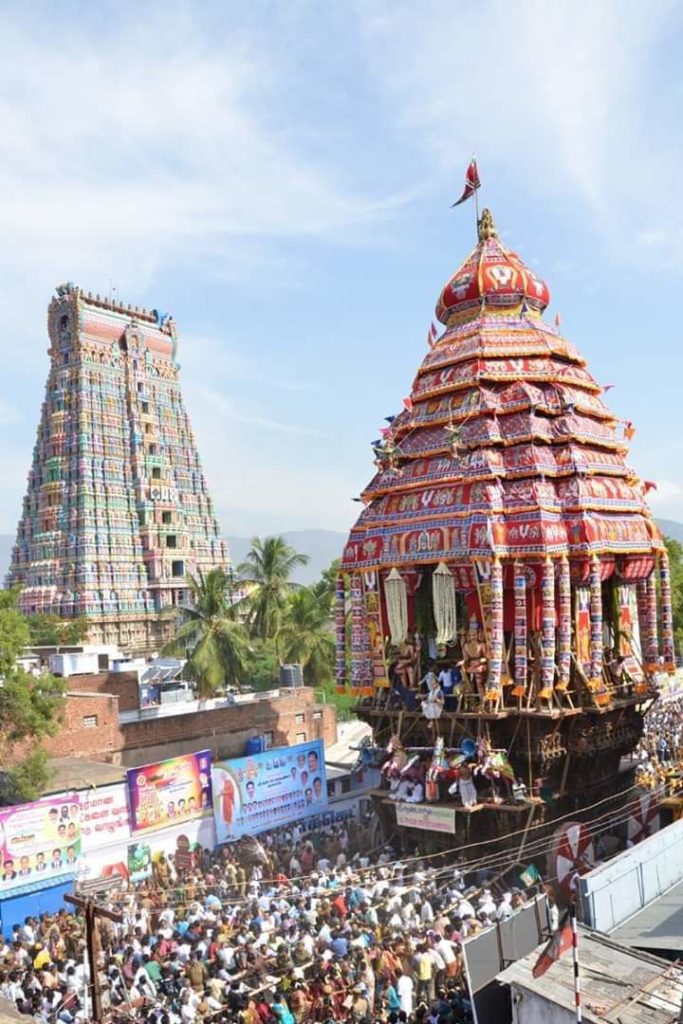
A staggeringly exhaustive and codified compendium, the Tolkaappiyam recommends that both poet and reader immerse themselves in systems of poetics, grammar, versification, forms, metrical and rhythm schemes and possess an adequate mental thesaurus before attempting to read or write poetry. The level of sophistication of classical Tamil poetry is profound and there have been many manuals written on its prosodic elements, which included an elaboration of elullu, or the phoneme, acai, or the metreme, cir, or the metrical foot, talai, or the linkage, ali, or the line, and totai, or ornamentation. Sangam literature, written in classical Tamil, offers us poetic works with re-combinations of the above elements in extremely refined ways.
As a bhakti saint, Andal composed in cen or Old Tamil. However, this implied following many of the rules codified in the Tolkaappiyam, the classical treatise on grammar and poetics. She did not follow its tinnai conventions that morph moods of love and evocative landscape into symbolic spaces of passion but worked with much of its other riddling complexities.
For example, Andal’s Tiruppavai is written in eight-line stanzas in the koccakakalippa meter, or four metrical feet, whereas the Nacciyar Tirumoli employs five different meters in lines that range from four to eight feet. We have not attempted to mimic that complex meter in English, as it would be a virtual impossibility, as well as resultant in a stilted form of poetry. We have instead attempted to abide in her imagery and metaphor, and find a suitable form that reinforces and mirrors the ecstatic content of her songs, especially as relates to the traditions of Tamil love poetry.
Take this anonymous verse about amorous poetry which states:
Aagapaattuvaannam
mudindadu polmudiyadadi
aahum
Here’s a literal translation, compounded by the difficulty that Tamil morphology is akin to a mantra with a maraiporul, or a secret hidden meaning:
Love-poetry sounds/forms/presents
complete as if not complete
is like that
or, put another way:
Love poetry seems
completed
but isn’t.
The loop is only completed when the listener participates in the performance of the poem somatically and collectively, and that kind of participatory model of interpretation points to the thriving local literary culture that existed at that time. Translating this element of historicity for a contemporary audience now provides us the space and freedom to make multiple connections between lines and between verses, and productive misinterpretations notwithstanding, allows for the liberation of imagination in trying to bring to light the numerous flowing undercurrents and holographic affects that are taking place simultaneously. For this reason, we have developed a radical mode of translation meant to illuminate a wide spectrum of Andal’s spirit, rather than to slavishly hew to the letter of her work.
This excerpt has been carried courtesy the permission of Zubaan Books. You can buy Andal: The Autobiography of a Goddess, here.
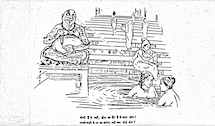
In the colonial period, the threat of the lecherous male gaze was used by the new patriarchy to restrict access to employment and public space for women, maintaining a patriarchal division of labour. Read how this process unfolded in our newest excerpt.
Saurav Kumar Rai
__

Was Lala Lajpat Rai's Hindu nationalism congruent with the principles of secularism? Explore our latest excerpt from Vanya Vaidehi Bhargav's fresh off-the-press book - Being Hindu, Being Indian: Lala Lajpat Rai's Ideas of Nation for more.
Vanya Vaidehi Bhargav
__
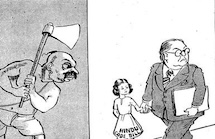
Popularly, we think that political cartoons question the powerful but what if this was not the case? What if political cartoons, replicated structures of the socially dominant? Read how in our new excerpt on political cartoons featuring Dr. Ambedkar.
Unnamati Syama Sundar
__

On Martyrs' day 2024, read the poet Sarojini Naidu's tribute to Gandhi given over All India Radio two days after his assassination.
Sarojini Naidu
__
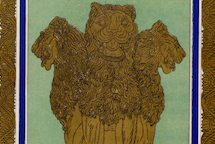
On Republic Day, the Indian History Collective presents you, twenty-two illustrations from the first illustrated manuscript (1954) of our Constitution.
Indian History Collective
__
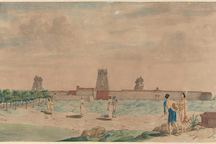
One of the key petitioners in the Ayodhya title dispute was Bhagwan Sri Ram Virajman. This petitioner was no mortal, but God Ram himself. How did Ram find his way from heaven to the Supreme Court of India to plead his case? Read further to find out.
Richard H Davis
__
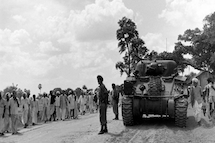
Labelled "one of the shortest, happiest wars ever seen", the integration of the princely state of Hyderabad in 1948 was anything but that. Read about the truth behind the creation of an Indian Union, the fault lines left behind, and what they signify
Afsar Mohammad
__
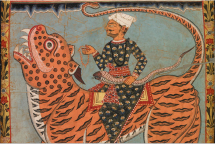
How did Bengal get a large Muslim population? Was it conversion by ruling elites was there something deeper at play? Read Dr. Eaton's classic essay to find out.
Richard Eaton
__
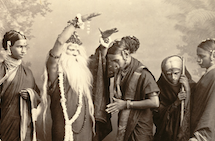
An excerpt from Shailaija Paik's new book 'Vulgarity of Caste' that documents the pivotal role Tamasha (the popular art form) has played in reinforcing and producing caste dynamics in Marathi society.
Shailaja Paik
__
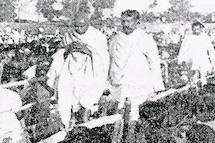
In 1942, two sub-districts in Bengal declared independence and set up a parallel government. The second part of our story brings you archival papers in the form of letters, newspaper reports, and judicial records documenting this remarkable movement.
Indian History Collective
__
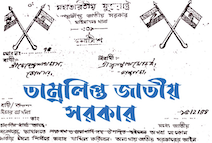
In 1942, five years before India was independent, two sub-divisions in Bengal not only declared their independence— they also instituted a parallel government. The first in a new series.
Indian History Collective
__
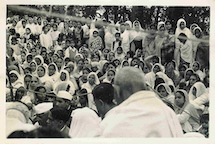
In his own words, read Mohandas Karamchand Gandhi's views on the proselytising efforts taken on by the organisations such as Arya Samaj, Tabhligi Jamaat, and the Church Missionary Society of England.
Mohandas Karamchand Gandhi
__
TIMELINE
-
2500 BC - Present 
2500 BC - Present Tribal History: Looking for the Origins of the Kodavas -
2200 BC to 600 AD 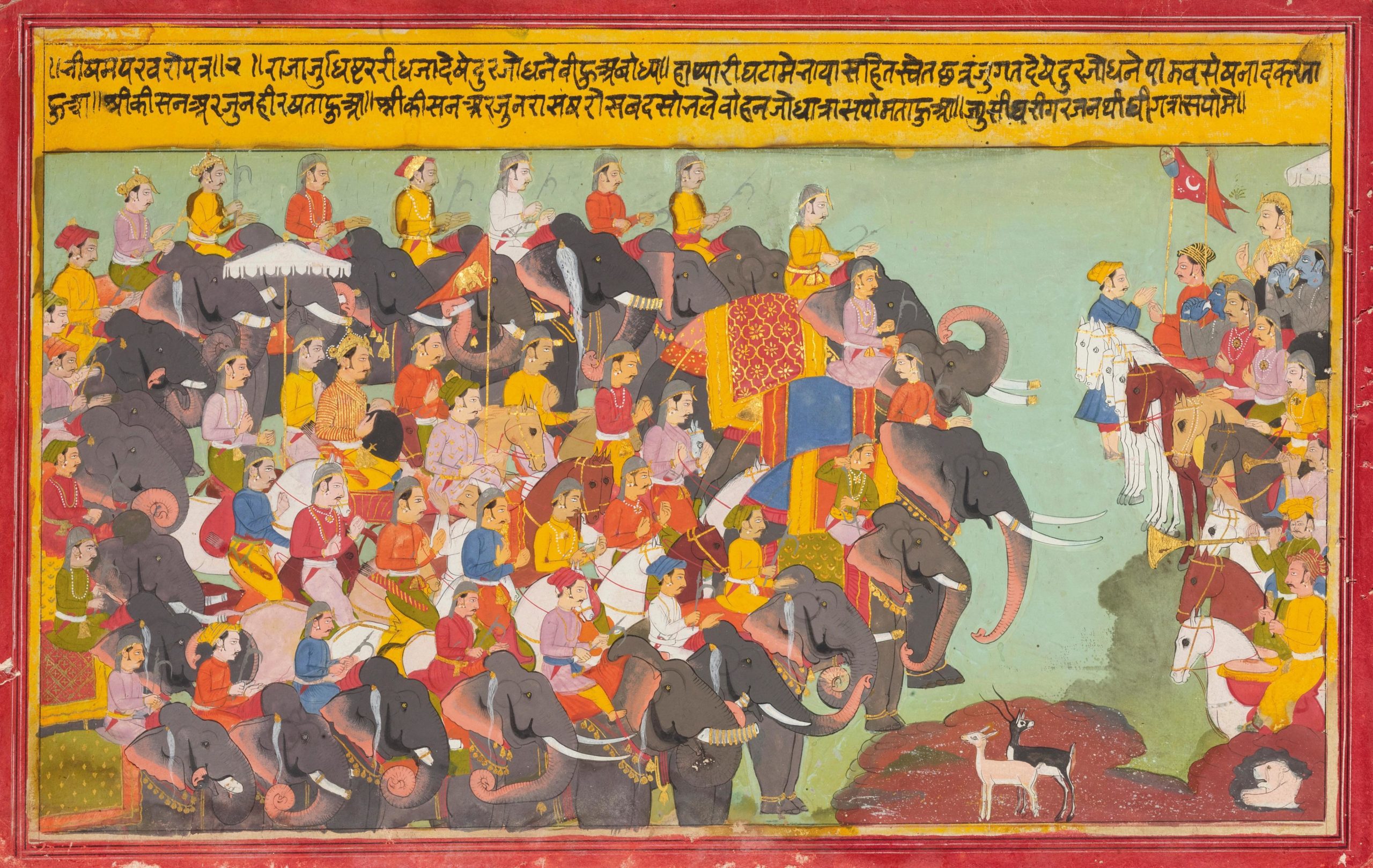
2200 BC to 600 AD War, Political Violence and Rebellion in Ancient India -
400 BC to 1001 AD 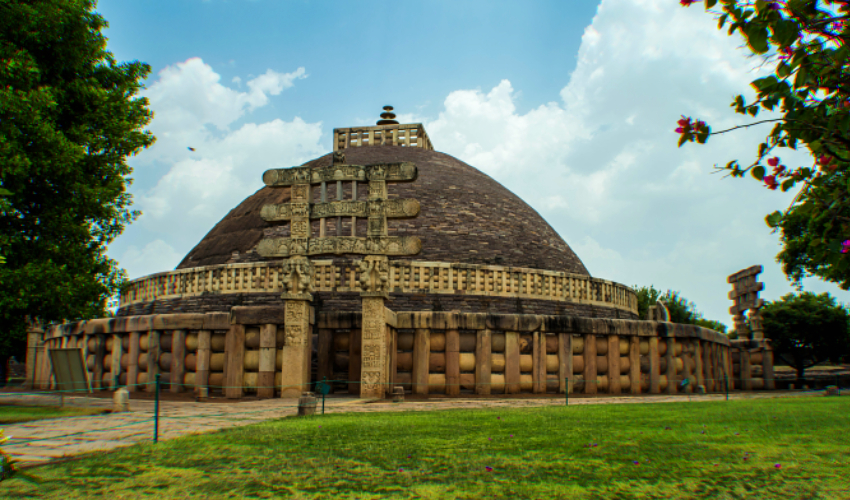
400 BC to 1001 AD The Dissent of the ‘Nastika’ in Early India -
600CE-1200CE 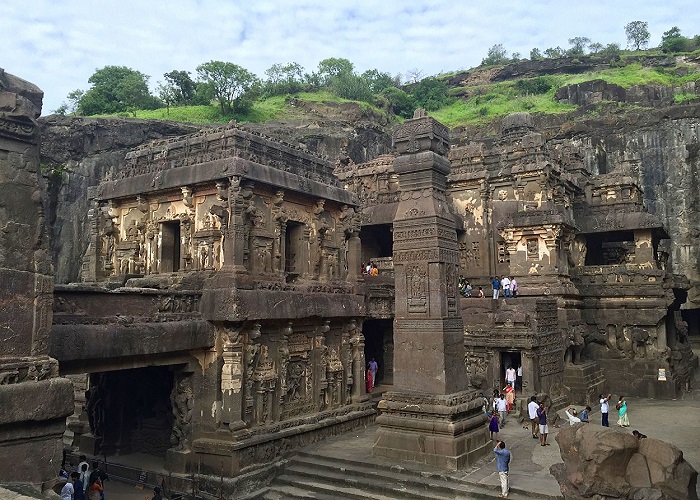
600CE-1200CE The Other Side of the Vindhyas: An Alternative History of Power -
c. 700 - 1400 AD 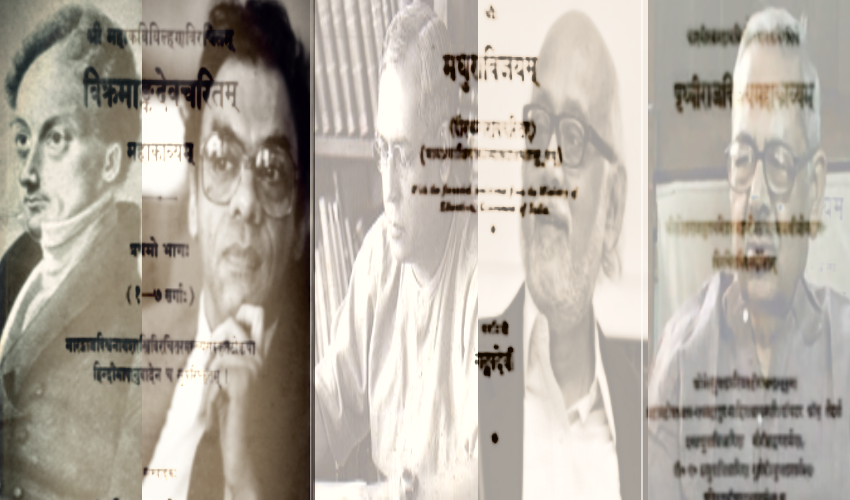
c. 700 - 1400 AD A Historian Recommends: Representing the ‘Other’ in Indian History -
c. 800 - 900 CE 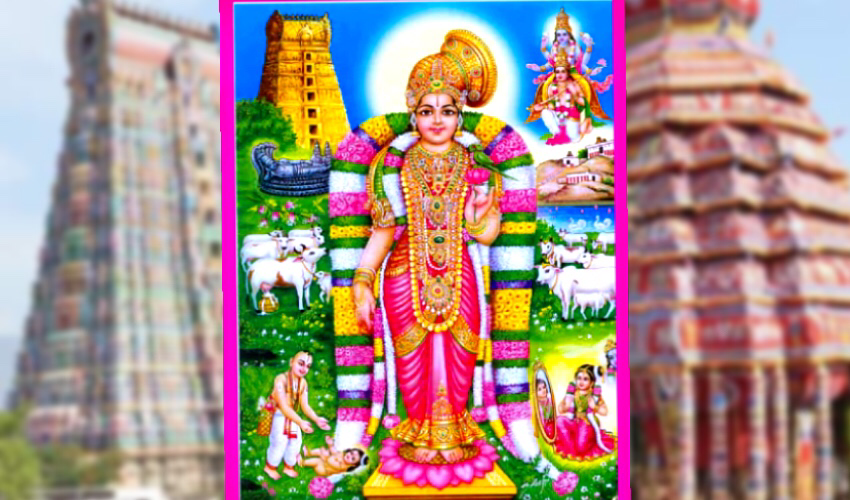
c. 800 - 900 CE ‘Drape me in his scent’: Female Sexuality and Devotion in Andal, the Goddess -
1192 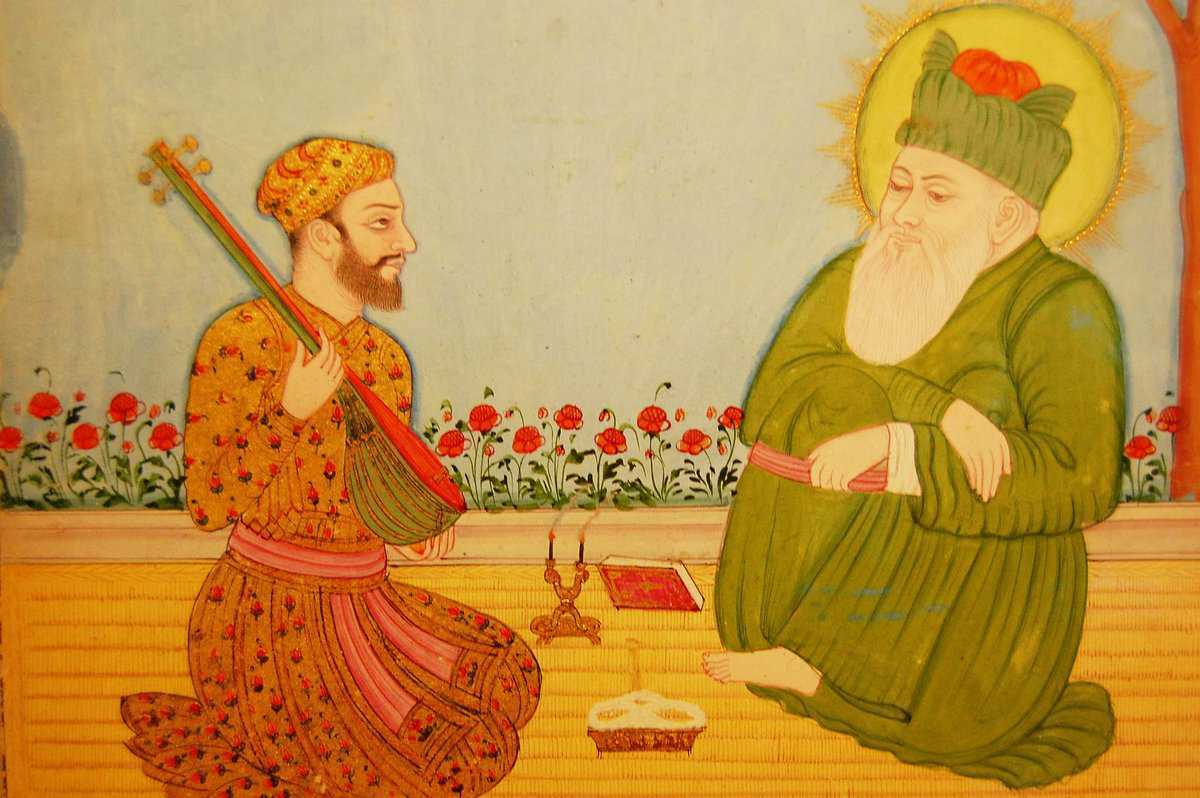
1192 Sufi Silsilahs: The Mystic Orders in India -
1200 - 1850 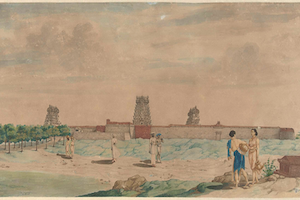
1200 - 1850 Temples, deities, and the law. -
c. 1500 - 1600 AD 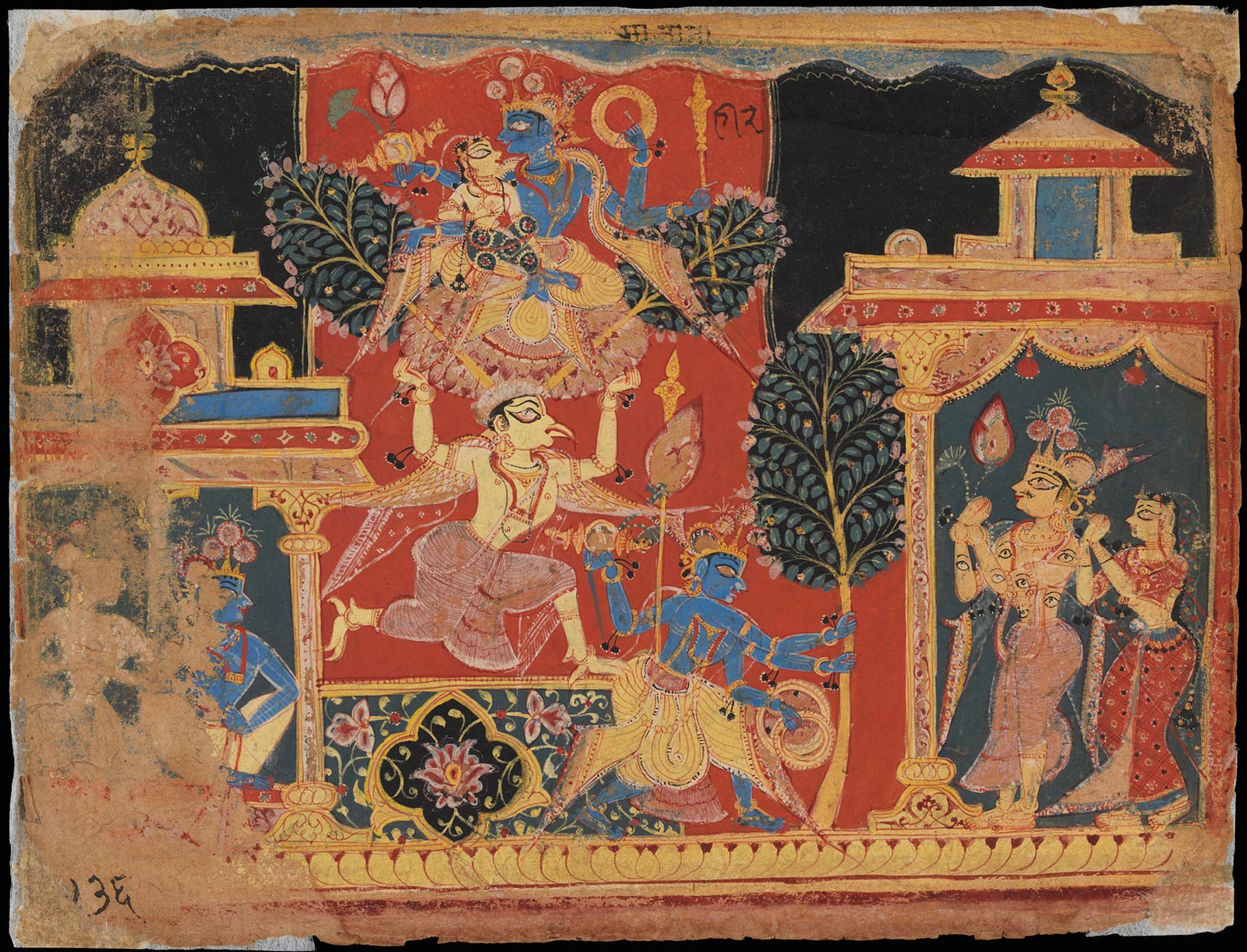
c. 1500 - 1600 AD A Historian Recommends: Religion in Mughal India -
1200-2020 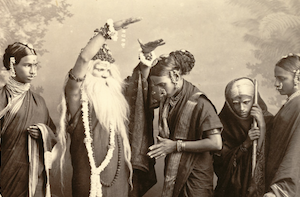
1200-2020 Policing Untouchables and Producing Tamasha in Maharashtra -
1530-1858 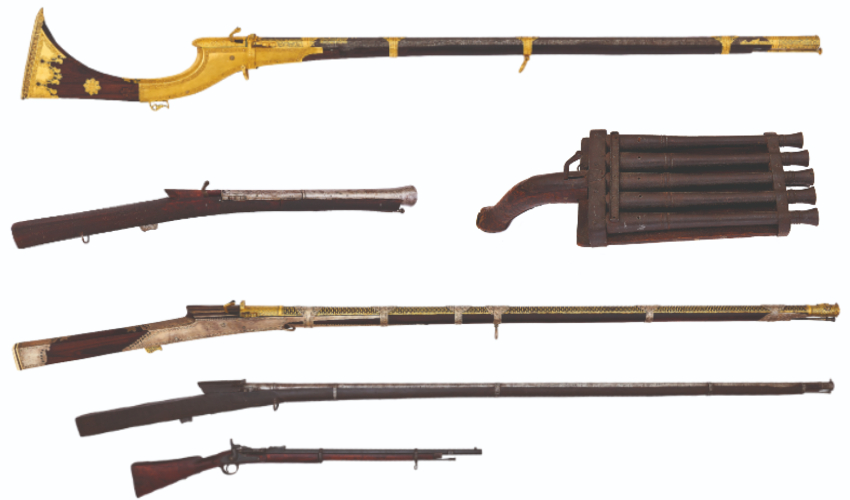
1530-1858 Rajputs, Mughals and the Handguns of Hindustan -
1575 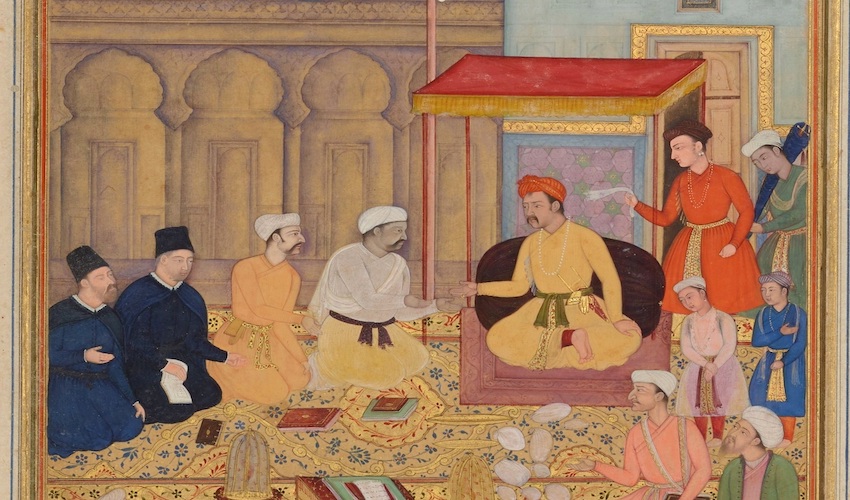
1575 Abdul Qadir Badauni & Abul Fazl: Two Mughal Intellectuals in King Akbar‘s Court -
1579 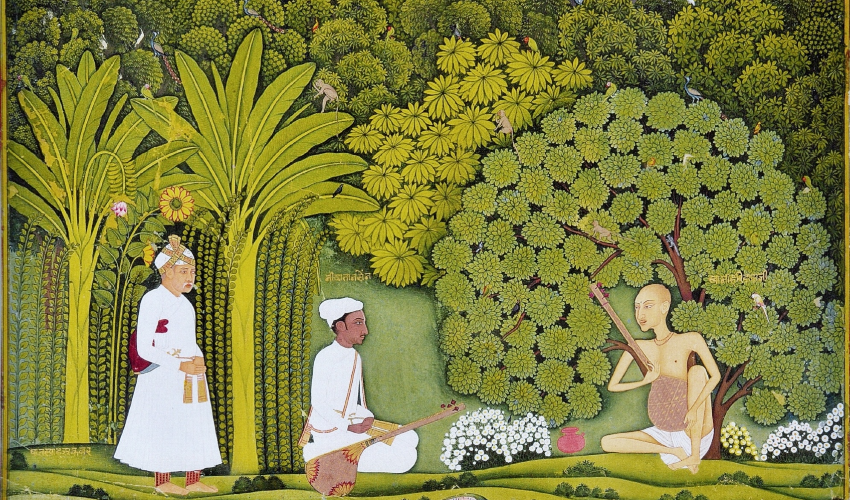
1579 Padshah-i Islam -
1550-1800 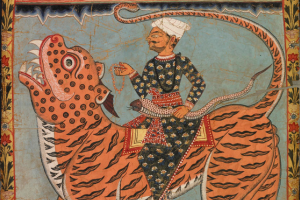
1550-1800 Who are the Bengal Muslims? : Conversion and Islamisation in Bengal -
c. 1600 CE-1900 CE 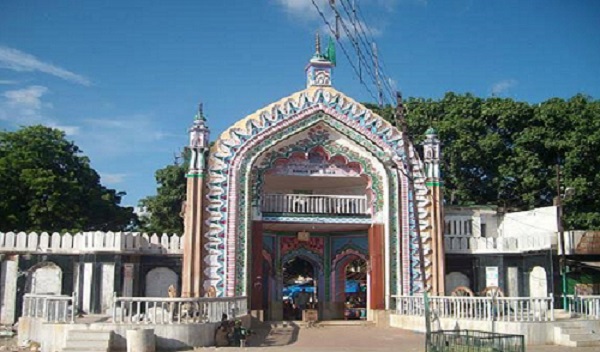
c. 1600 CE-1900 CE The Birth of a Community: UP’s Ghazi Miyan and Narratives of ‘Conquest’ -
1553 - 1900 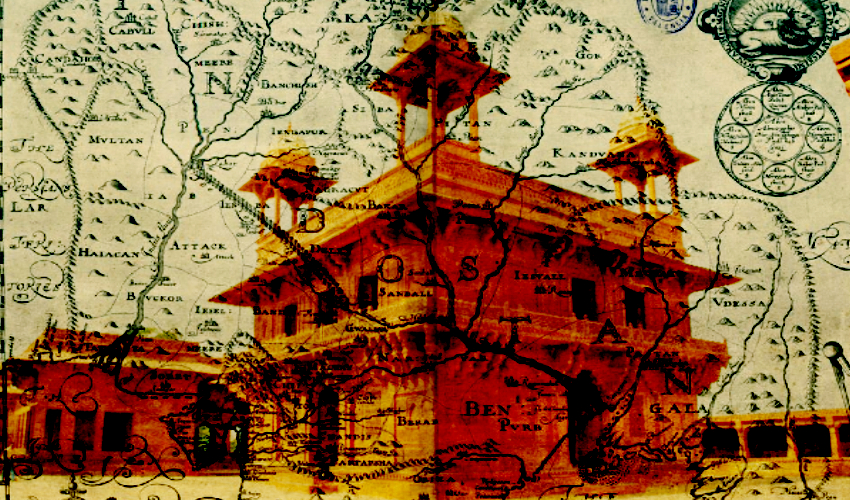
1553 - 1900 What Happened to ‘Hindustan’? -
1630-1680 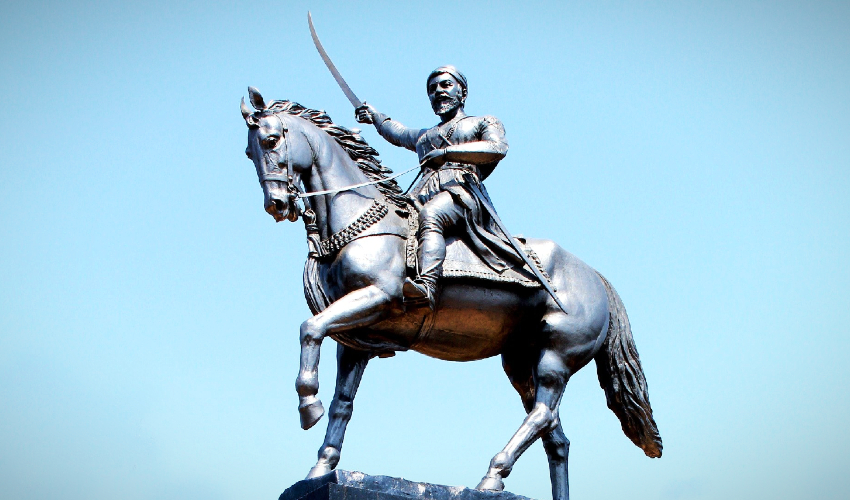
1630-1680 Shivaji: Hindutva Icon or Secular Nationalist? -
1630 -1680 
1630 -1680 Shivaji: His Legacy & His Times -
c. 1724 – 1857 A.D. 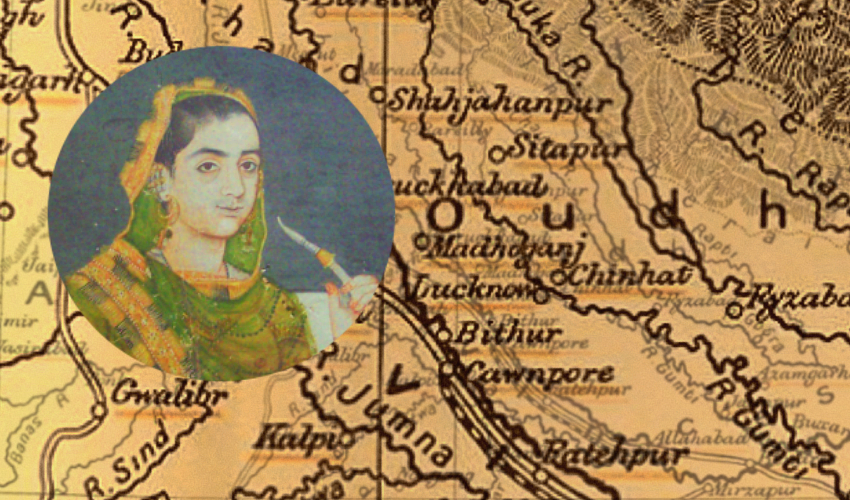
c. 1724 – 1857 A.D. Bahu Begum and the Gendered Struggle for Power -
1818 - Present 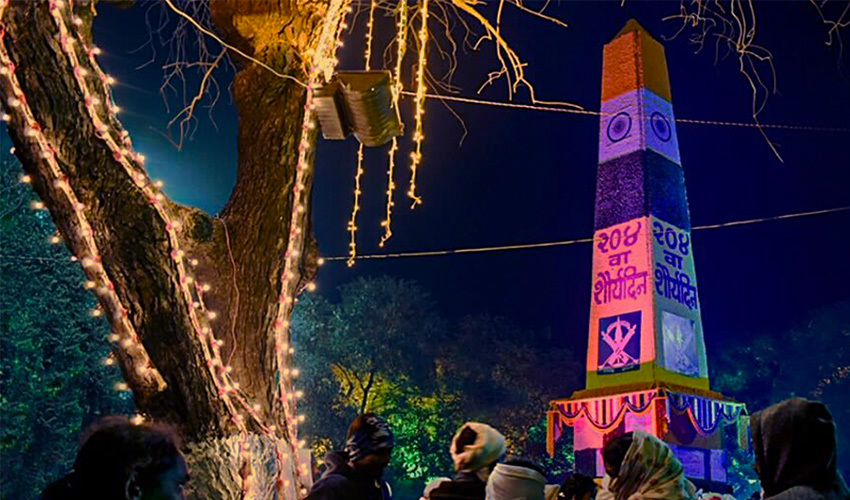
1818 - Present The Contesting Memories of Bhima-Koregaon -
1831 
1831 The Derozians’ India -
1855 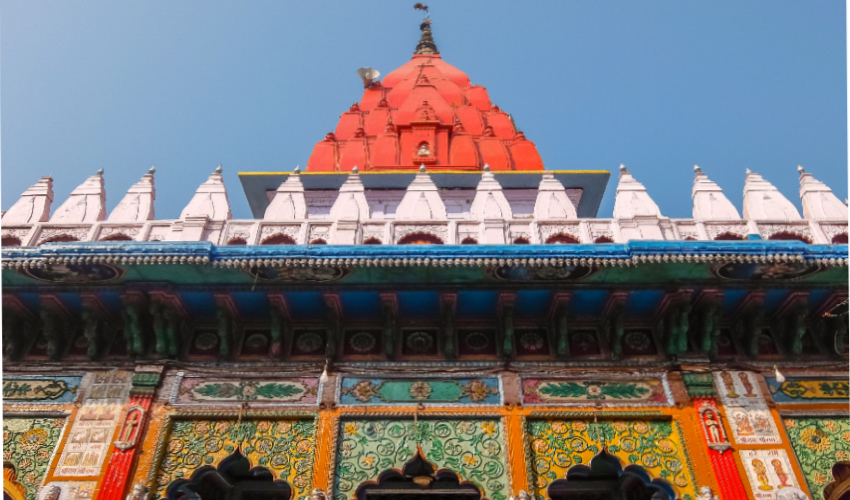
1855 Ayodhya 1855 -
1856 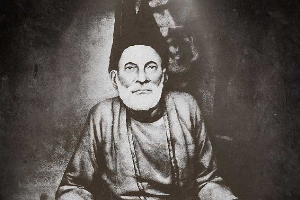
1856 “Worshipping the dead is not an auspicious thing” — Ghalib -
1857 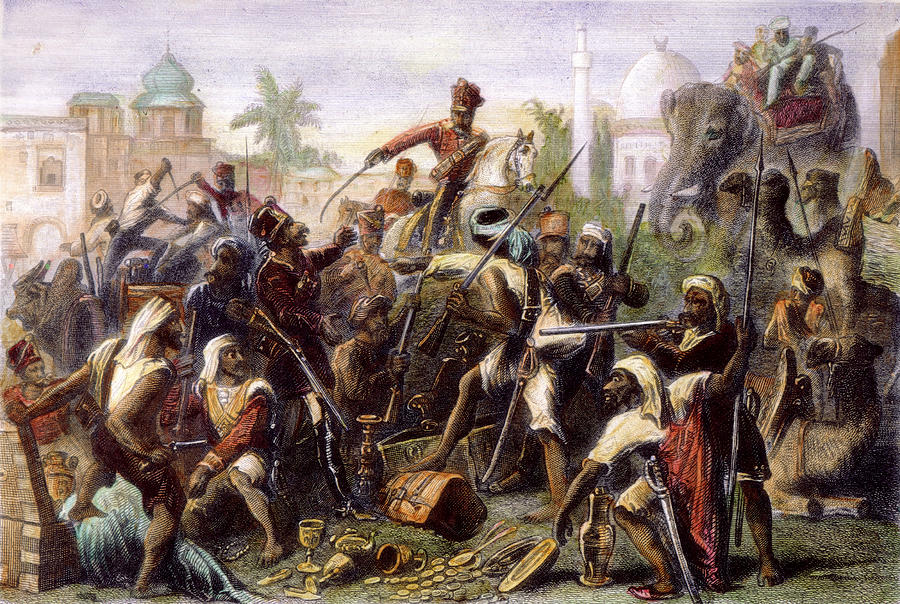
1857 A Subaltern speaks: Dalit women’s counter-history of 1857 -
1858 - 1976 
1858 - 1976 Lifestyle as Resistance: The Curious Case of the Courtesans of Lucknow -
1883 - 1894 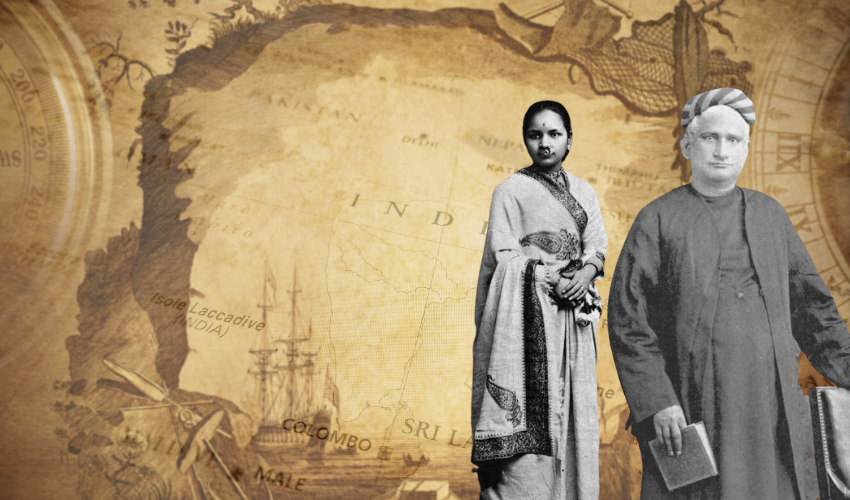
1883 - 1894 The Sea Voyage Question: A Nineteenth century Debate -
1887 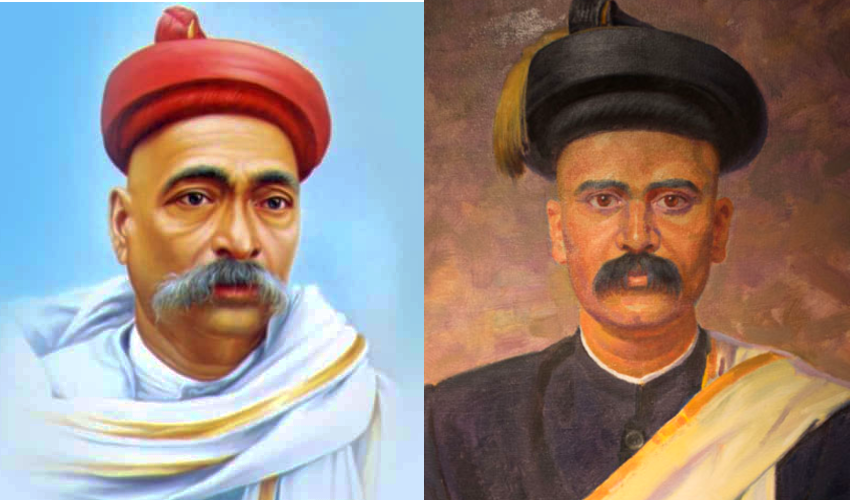
1887 The Great Debaters: Tilak Vs. Agarkar -
1893-1946 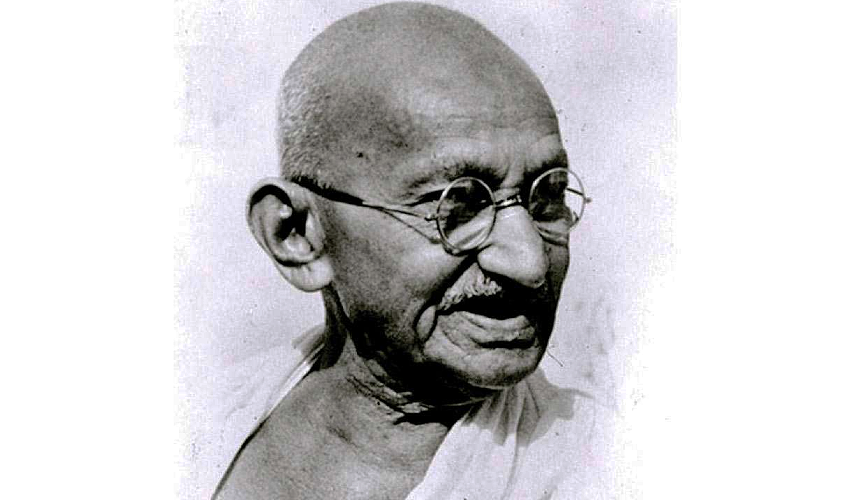
1893-1946 A Historian Recommends: Gandhi Vs. Caste -
1897 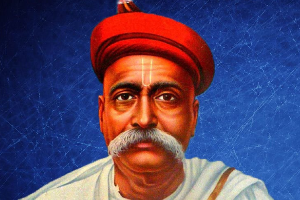
1897 Queen Empress vs. Bal Gangadhar Tilak: An Autopsy -
1913 - 1916 Modern Review 
1913 - 1916 A Young Ambedkar in New York -
1916 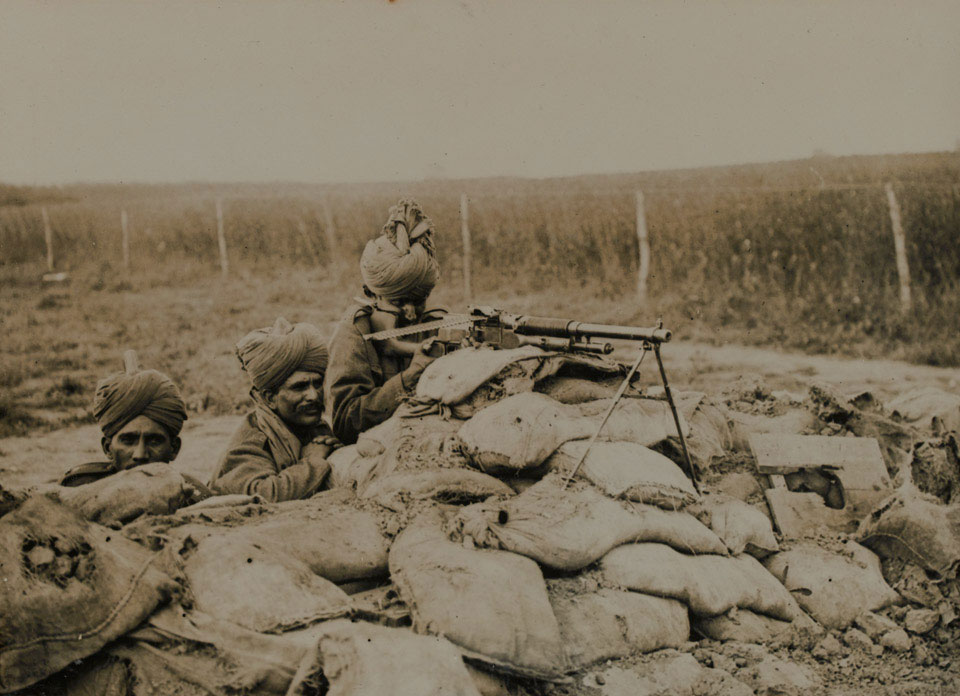
1916 A Rare Account of World War I by an Indian Soldier -
1917 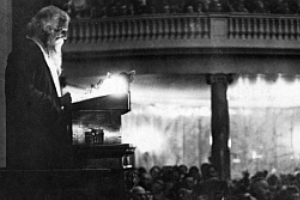
1917 On Nationalism, by Tagore -
1918 - 1919 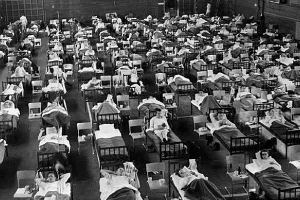
1918 - 1919 What Happened to the Virus That Caused the World’s Deadliest Pandemic? -
1920 - 1947 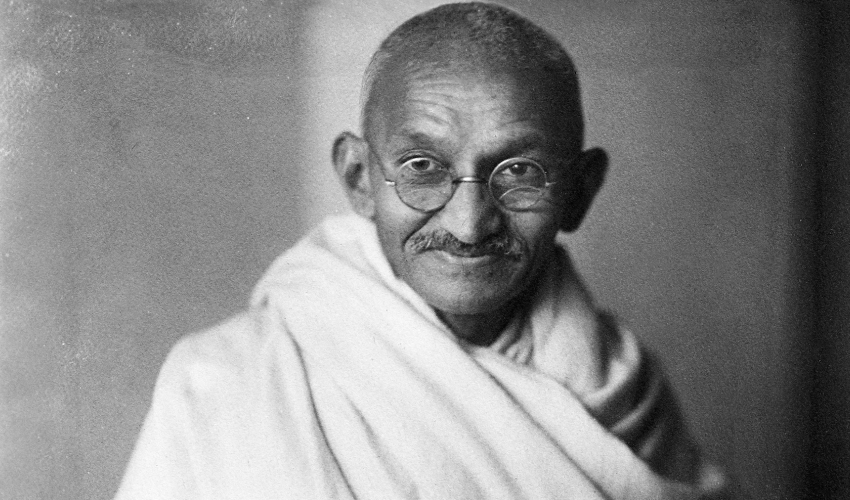
1920 - 1947 How One Should Celebrate Diwali, According to Gandhi -
1921 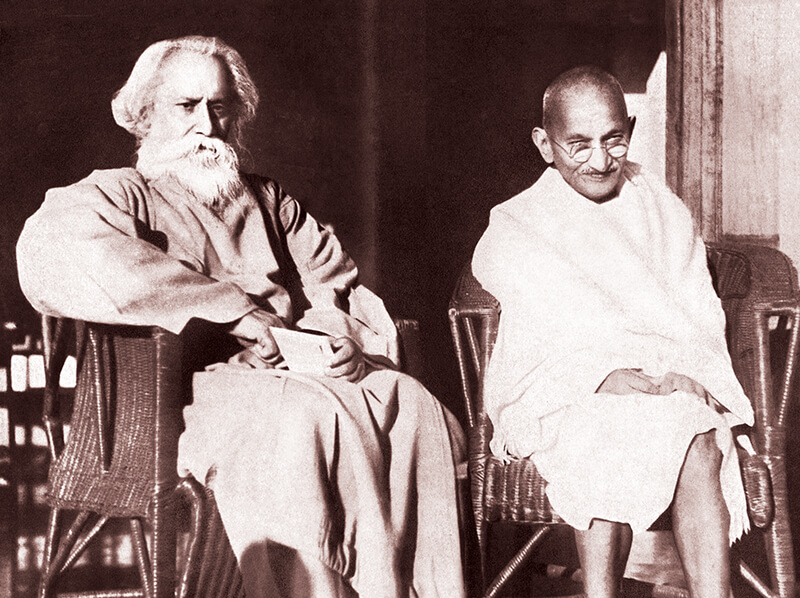
1921 Great Debates: Tagore Vs. Gandhi (1921) -
1921 - 2015 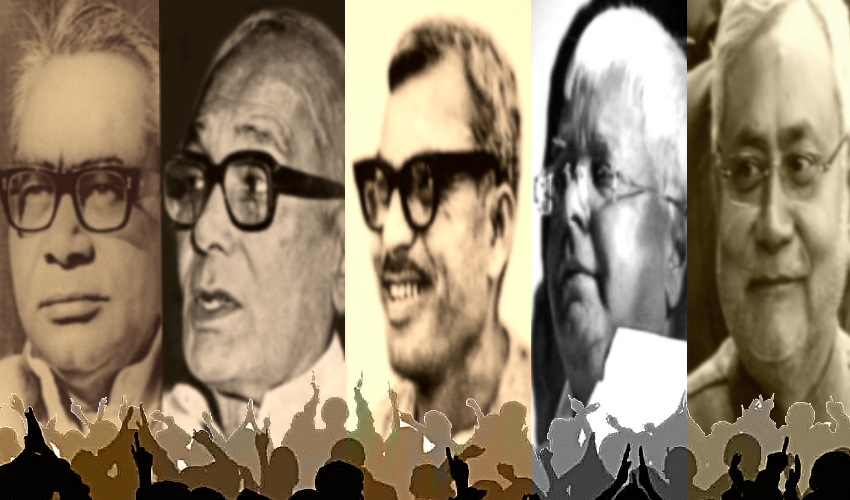
1921 - 2015 A History of Caste Politics and Elections in Bihar -
1915-1921 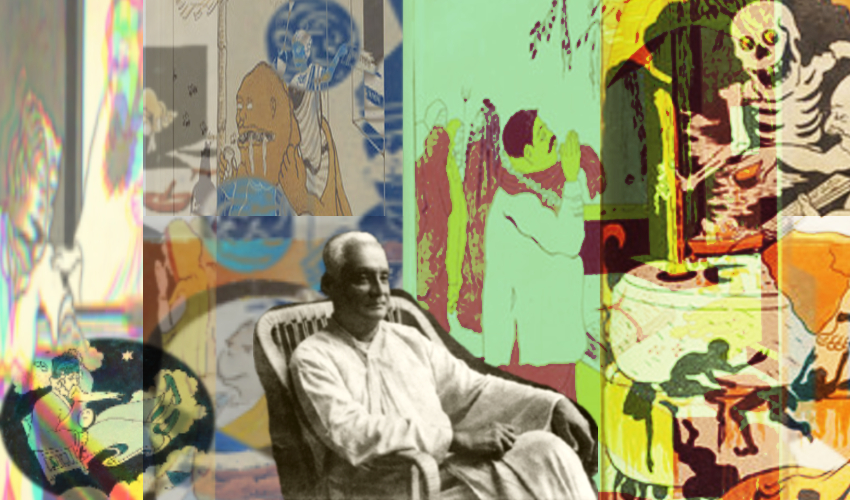
1915-1921 The Satirical Genius of Gaganendranath Tagore -
1924-1937 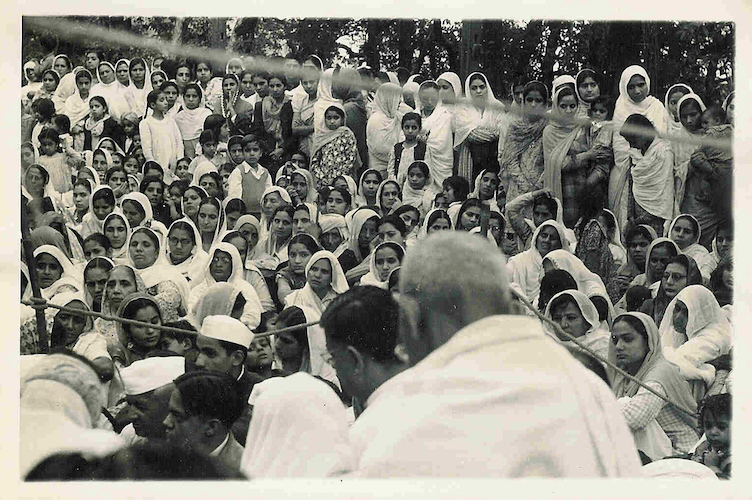
1924-1937 What were Gandhi’s Views on Religious Conversion? -
1900-1950 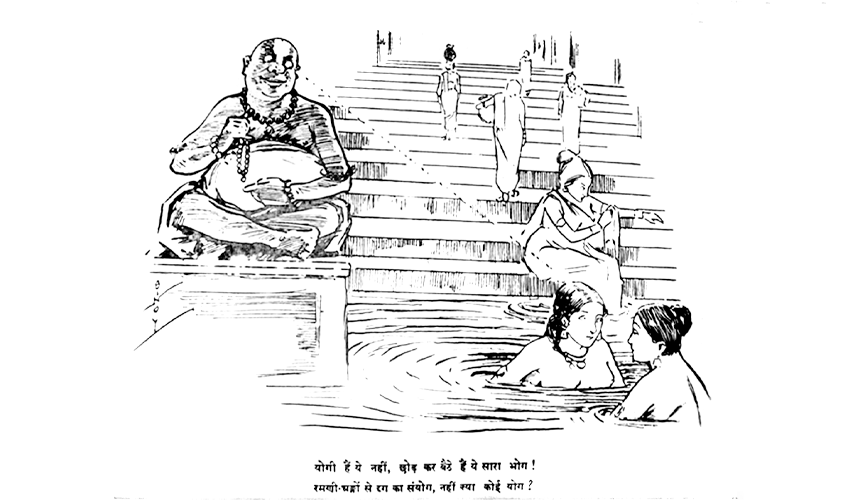
1900-1950 Gazing at the Woman’s Body: Historicising Lust and Lechery in a Patriarchal Society -
1925, 1926 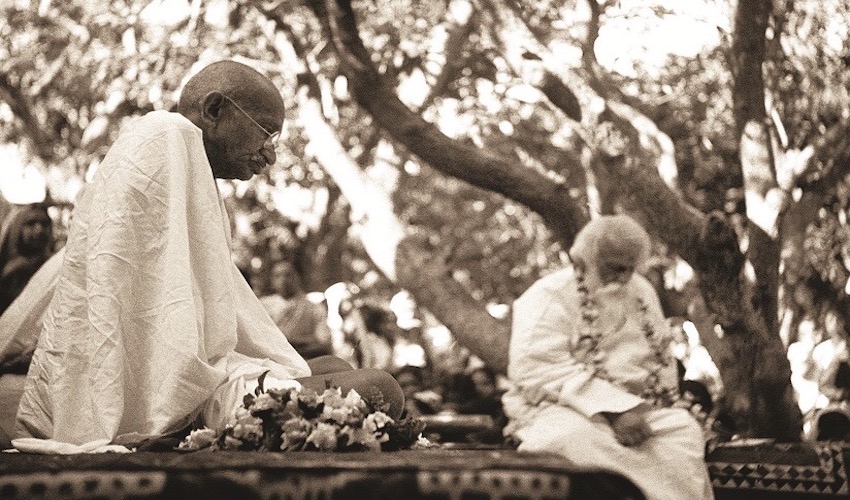
1925, 1926 Great Debates: Tagore vs Gandhi (1925-1926) -
1928 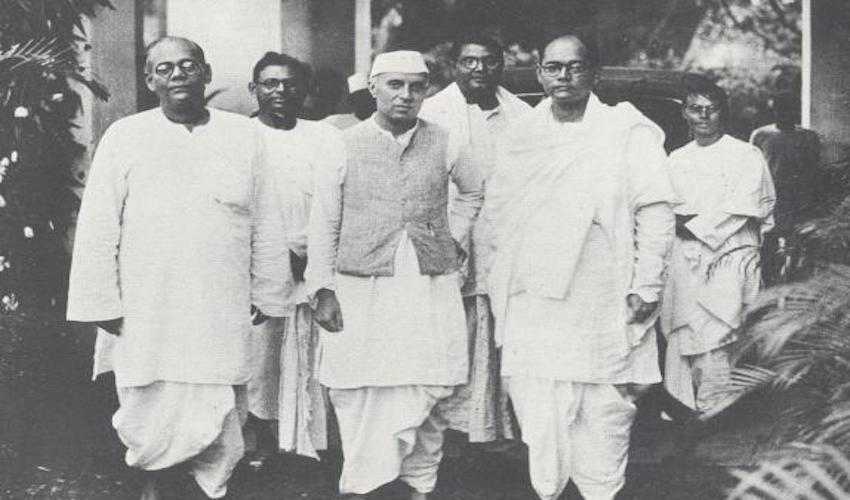
1928 Bhagat Singh’s dilemma: Nehru or Bose? -
1930 Modern Review 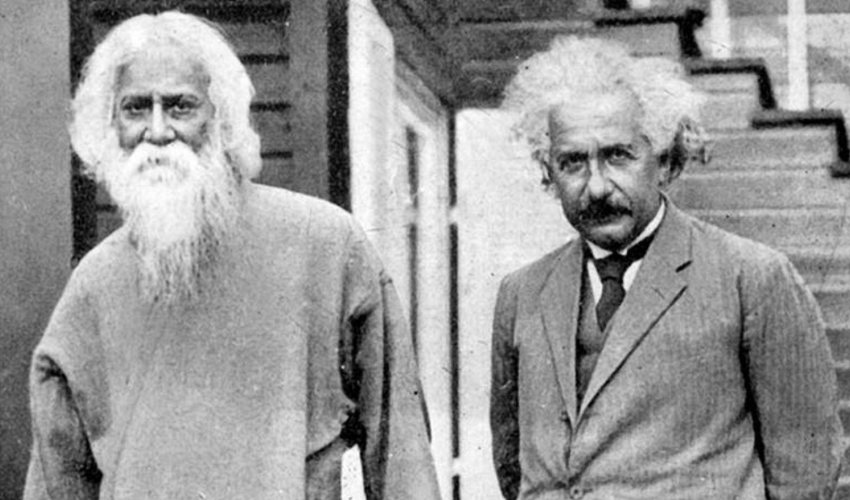
1930 The Modern Review Special: On the Nature of Reality -
1932 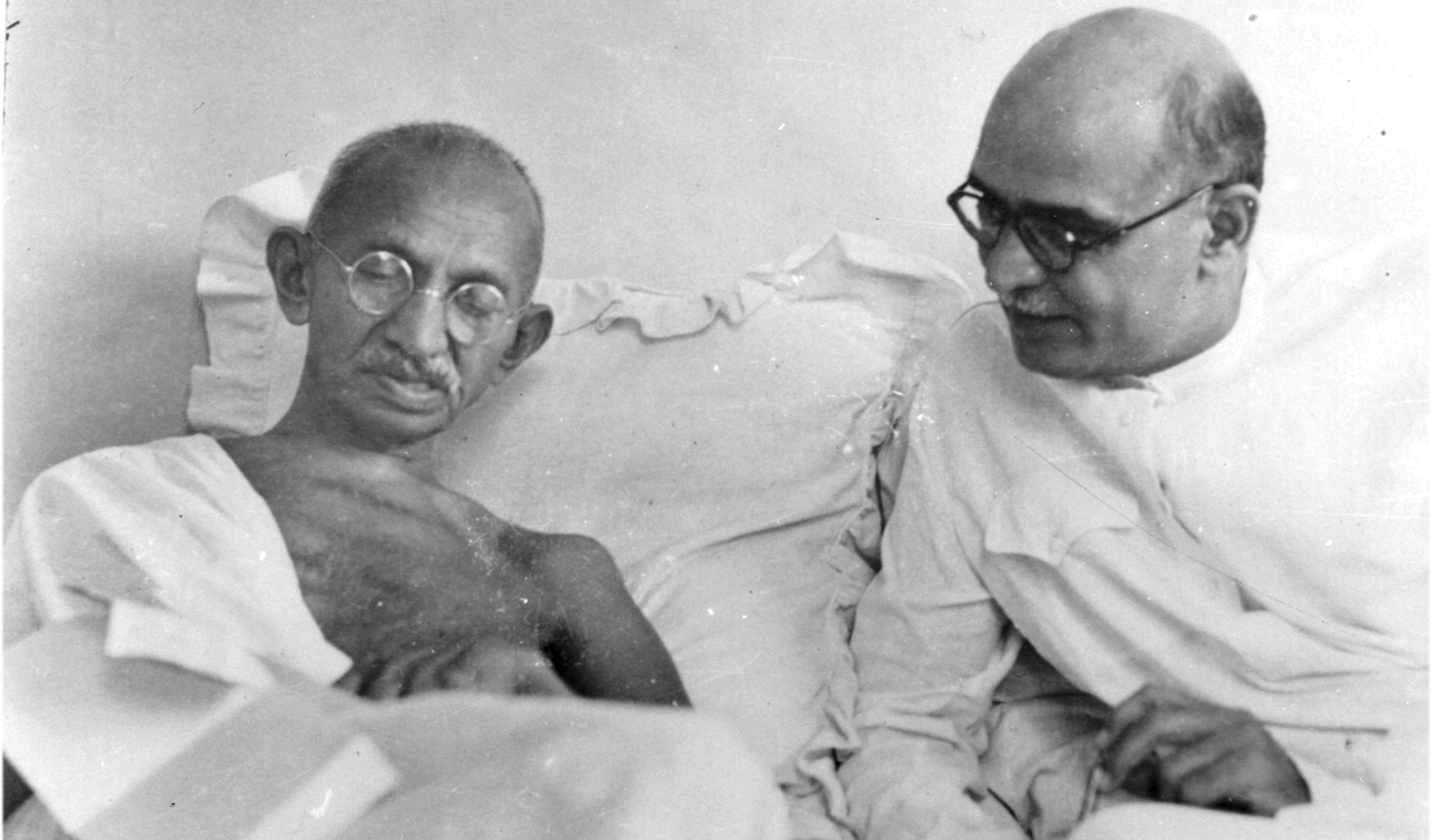
1932 Caste, Gandhi and the Man Beside Gandhi -
1933 - 1991 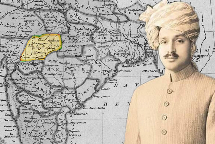
1933 - 1991 Raghubir Sinh: The Prince Who Would Be Historian -
1935 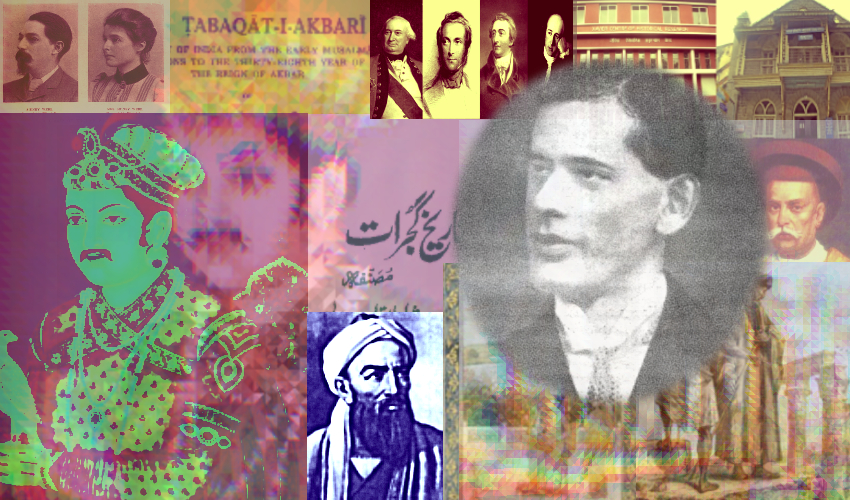
1935 A Historian Recommends: SA Khan’s Timeless Presidential Address -
1865-1928 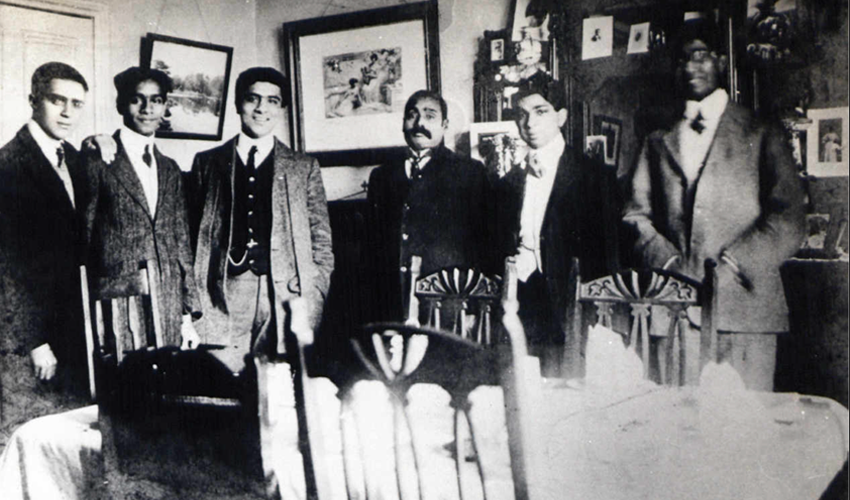
1865-1928 Understanding Lajpat Rai’s Hindu Politics and Secularism -
1935 Modern Review 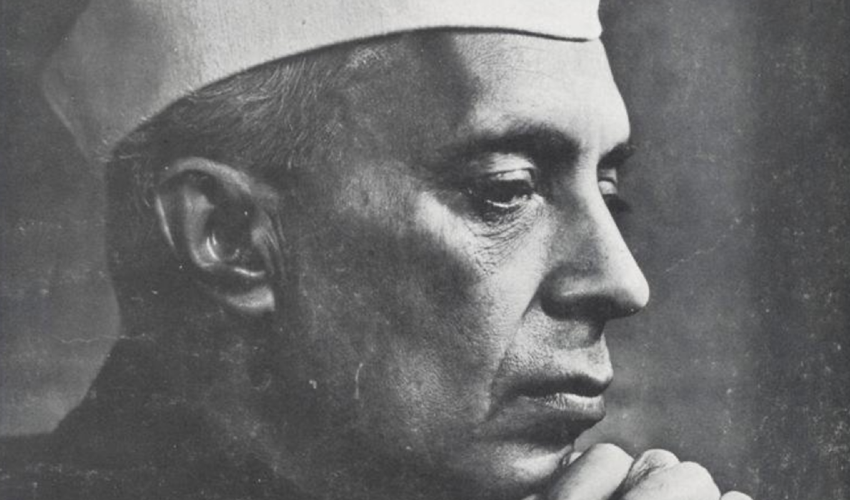
1935 The Modern Review Special: The Mind of a Judge -
1936 Modern Review 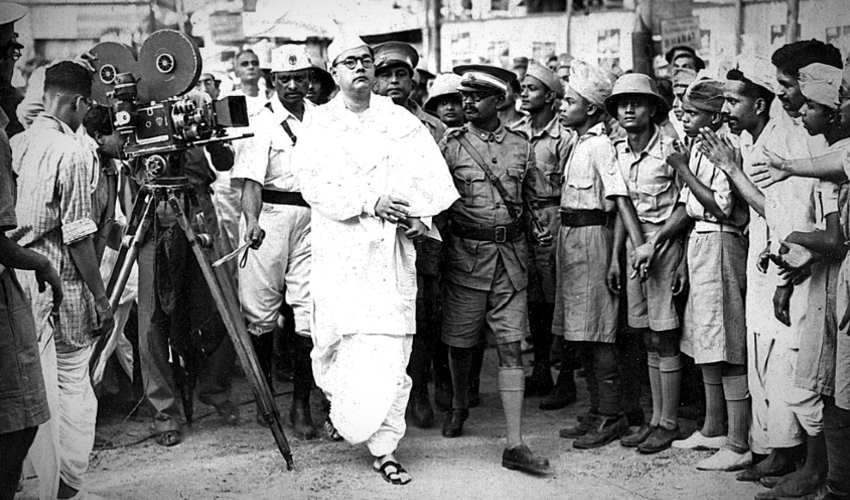
1936 The Modern Review Special: When Netaji Subhas Bose Was Wrongfully Detained for ‘Terrorism’ -
1936 
1936 Annihilation of Caste: Part 1 -
1936 Modern Review 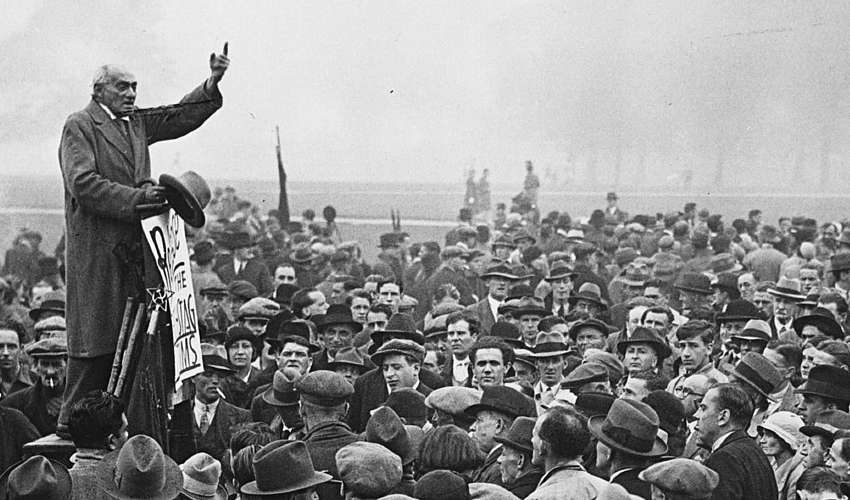
1936 The Modern Review Special: An Indian MP in the British Parliament -
1936 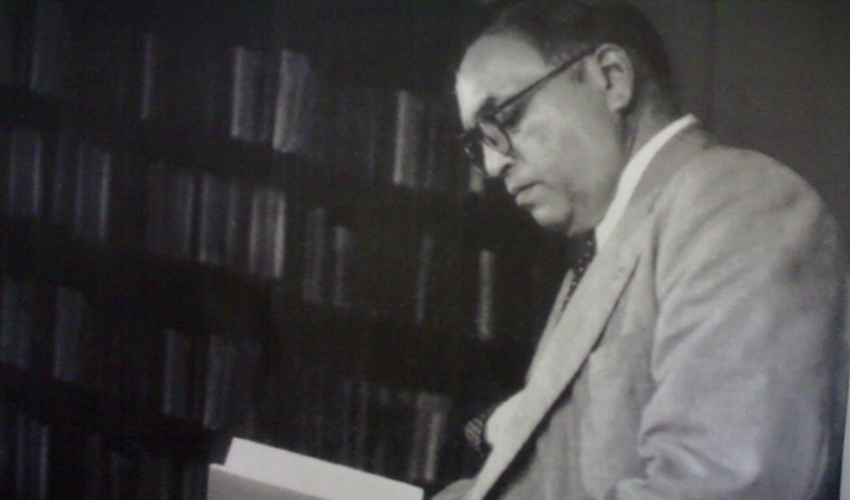
1936 Annihilation of Caste: Part 2 -
1936 
1936 A Reflection of His Age: Munshi Premchand on the True Purpose of Literature -
1936 Modern Review 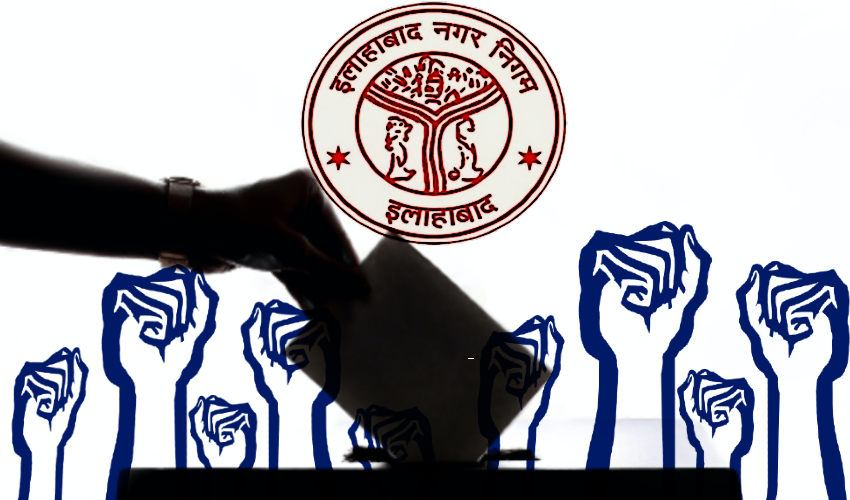
1936 The Modern Review Special: The Defeat of a Dalit Candidate in a 1936 Municipal Election -
1937 Modern Review 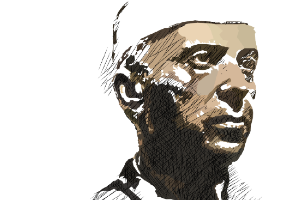
1937 The Modern Review Special: Rashtrapati -
1938 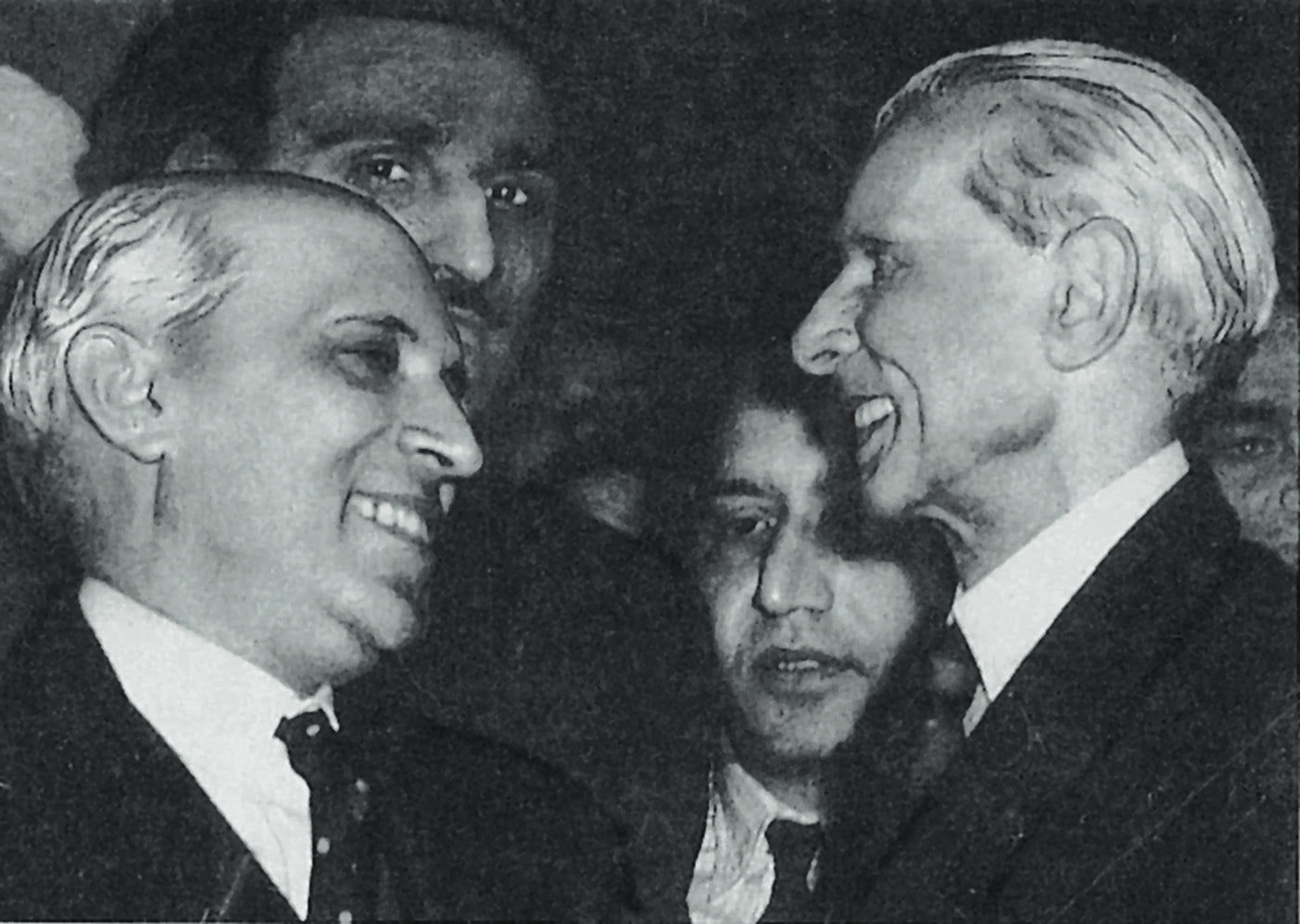
1938 Great Debates: Nehru Vs. Jinnah (1938) -
1942 Modern Review 
1942 IHC Uncovers: A Parallel Government In British India (Part 1) -
1942-1945 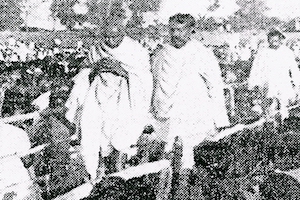
1942-1945 IHC Uncovers: A Parallel Government in British India (Part 2) -
1946 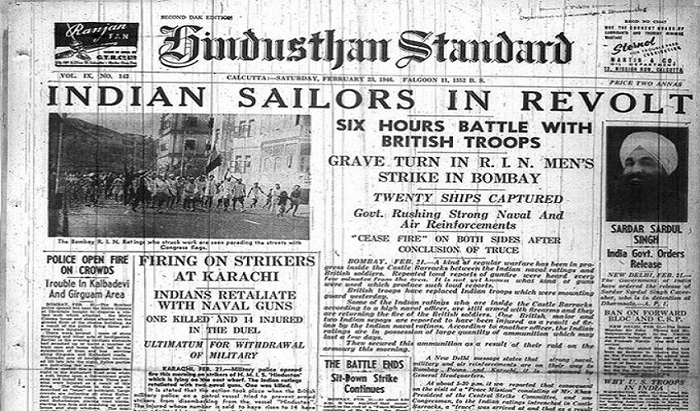
1946 Our Last War of Independence: The Royal Indian Navy Mutiny of 1946 -
1946 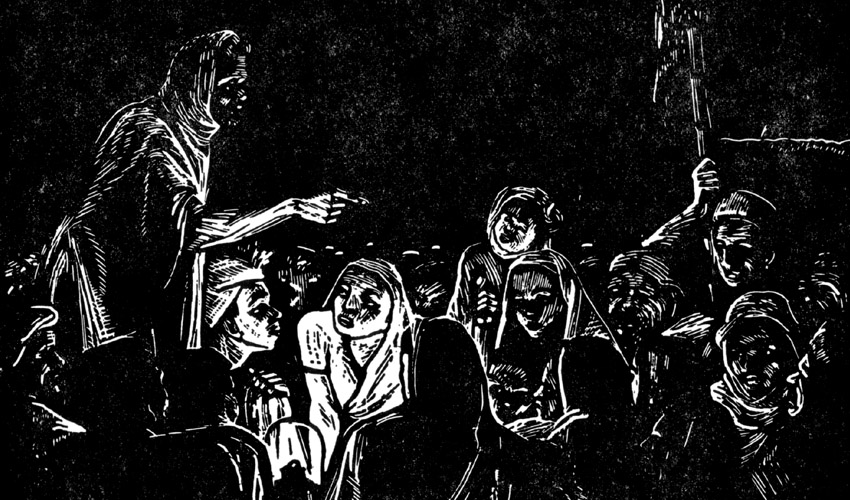
1946 An Artist’s Account of the Tebhaga Movement in Pictures And Prose -
1946 – 1947 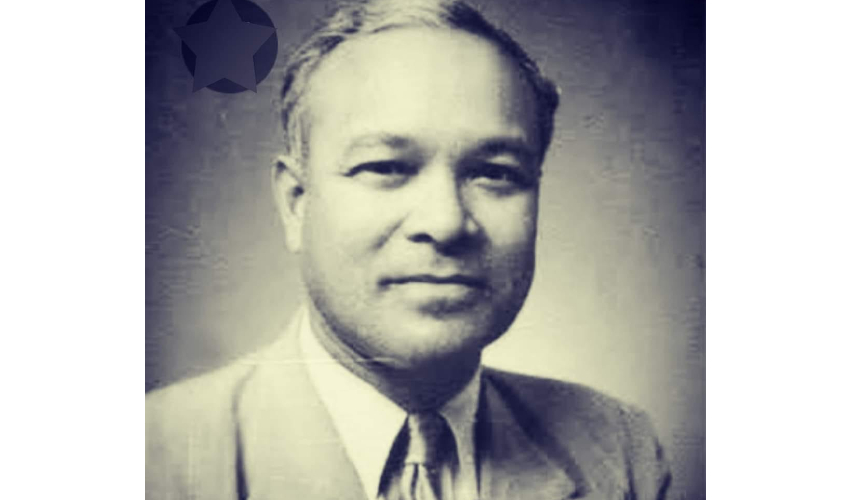
1946 – 1947 “The Most Democratic People on Earth” : An Adivasi Voice in the Constituent Assembly -
1946-1947 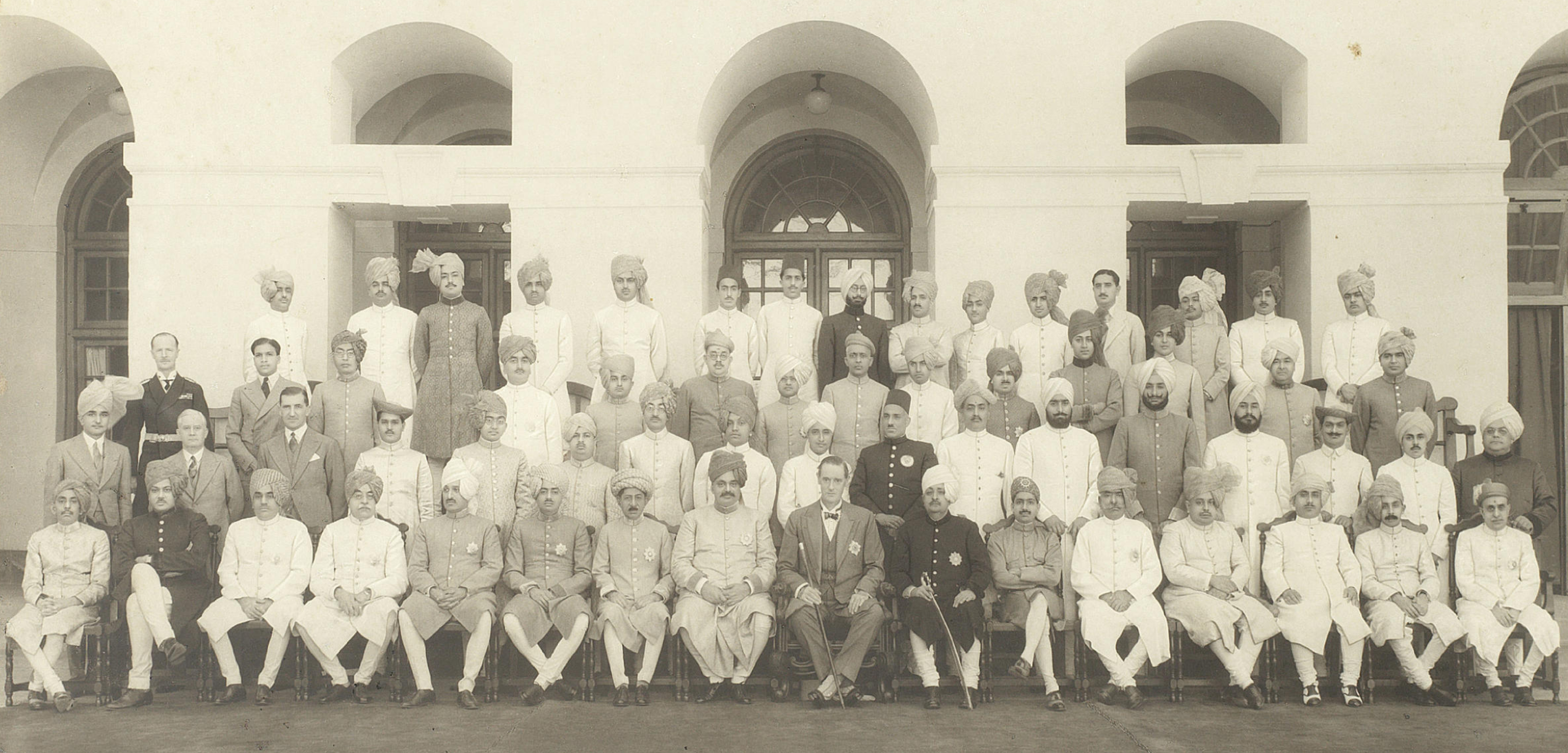
1946-1947 VP Menon and the Birth of Independent India -
1916 - 1947 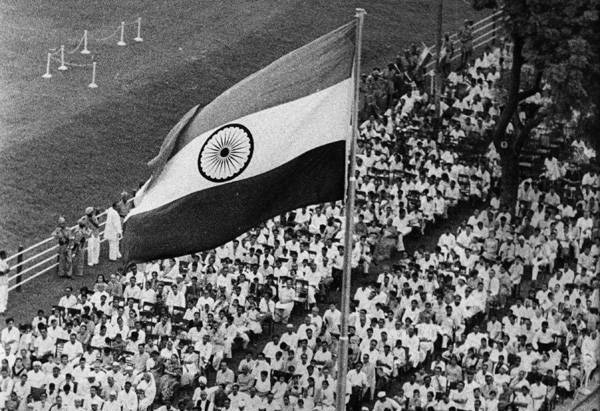
1916 - 1947 8 @ 75: 8 Speeches Independent Indians Must Read -
1947-1951 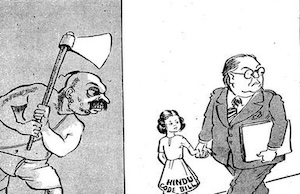
1947-1951 Ambedkar Cartoons: The Joke’s On Us -
1948 
1948 “My Father, Do Not Rest” -
1940-1960 
1940-1960 Integration Myth: A Silenced History of Hyderabad -
1948 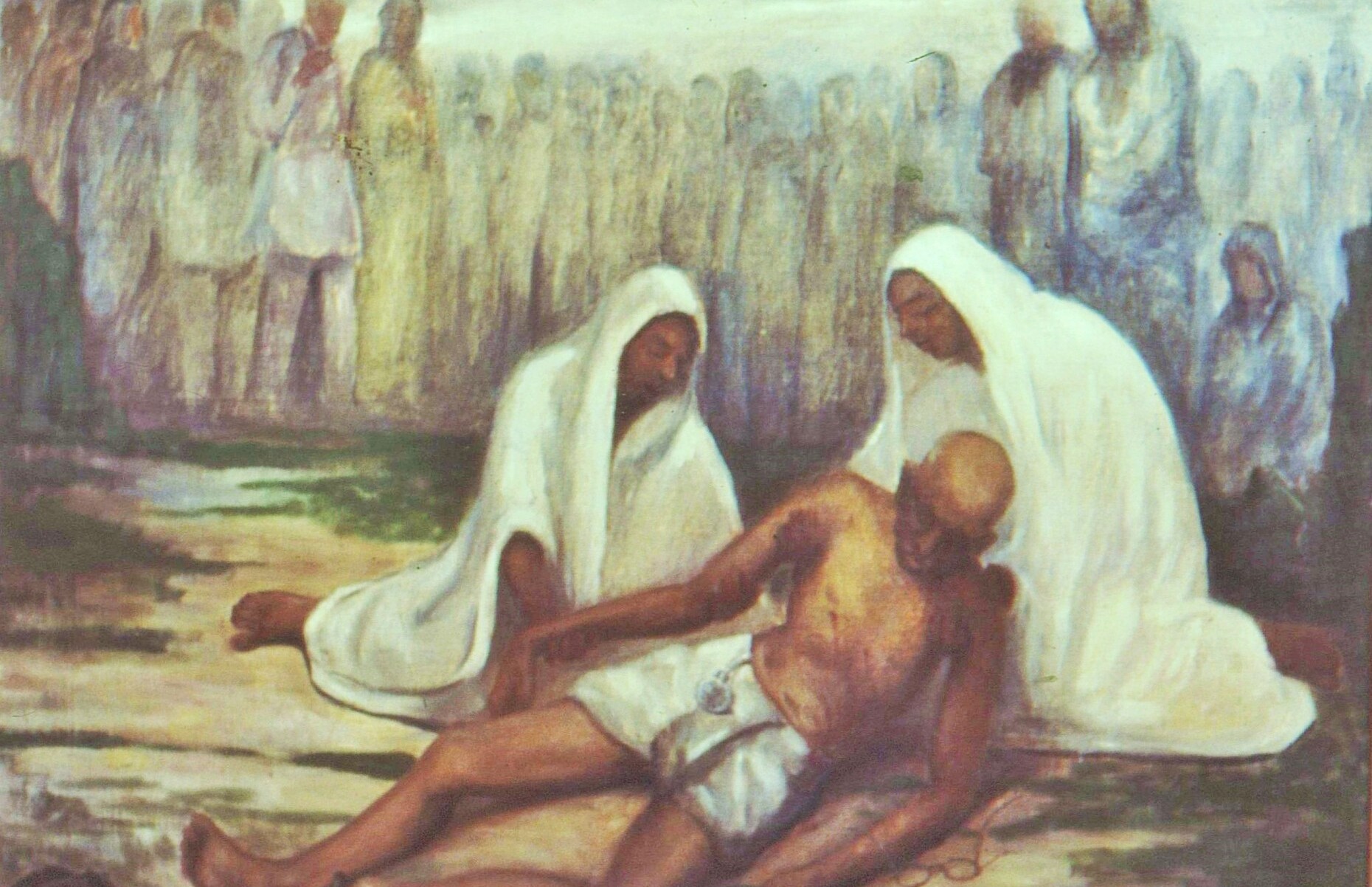
1948 The Assassination of a Mahatma, the Princely States and the ‘Hindu’ Nation -
1949 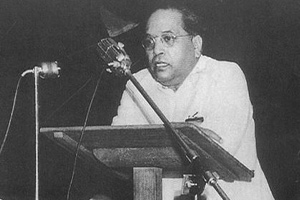
1949 Ambedkar warns against India becoming a ‘Democracy in Form, Dictatorship in Fact’ -
1950 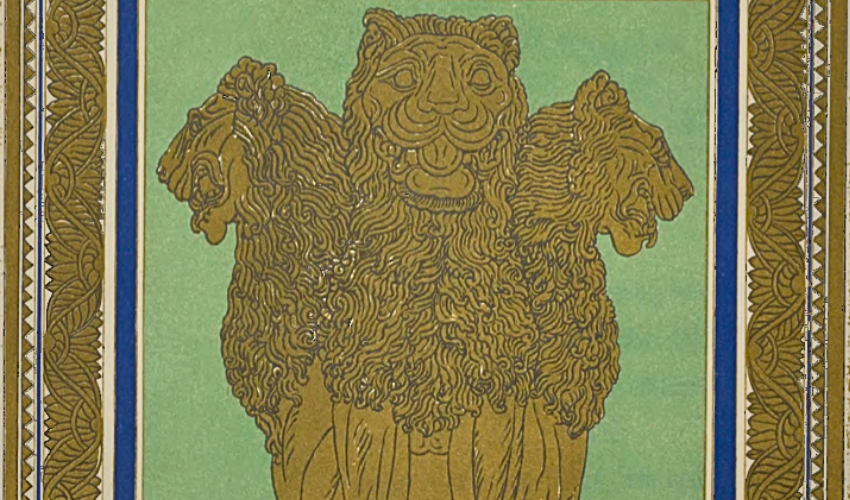
1950 Illustrations from the constitution -
1951 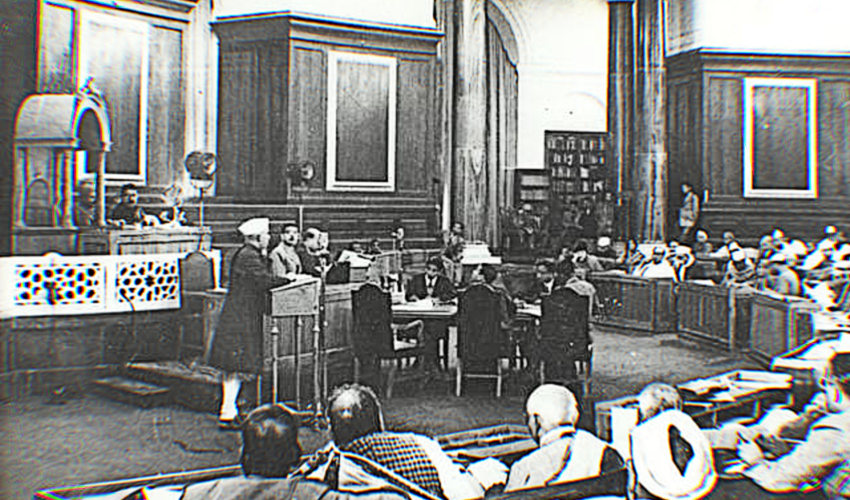
1951 How the First Amendment to the Indian Constitution Circumscribed Our Freedoms & How it was Passed -
1967 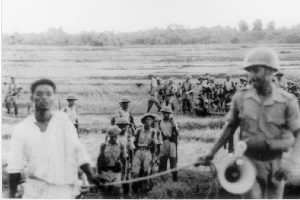
1967 Once Upon A Time In Naxalbari -
1970 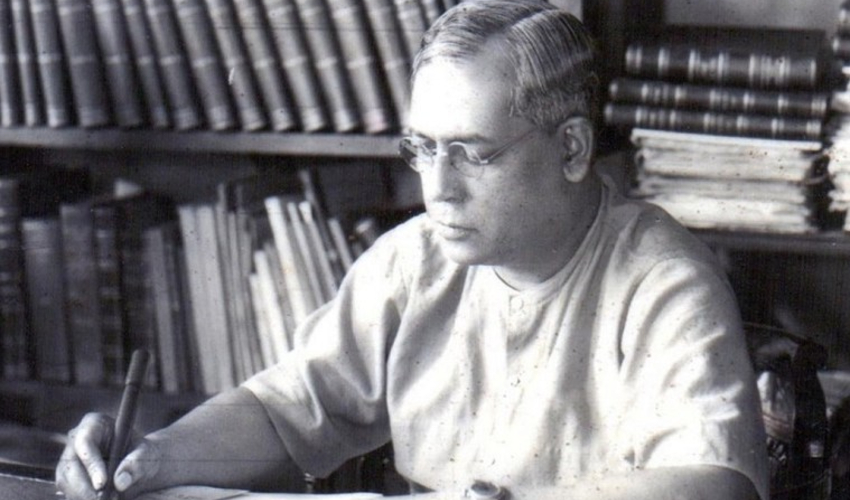
1970 R.C. Majumdar on Shortcomings in Indian Historiography -
1973 - 1993 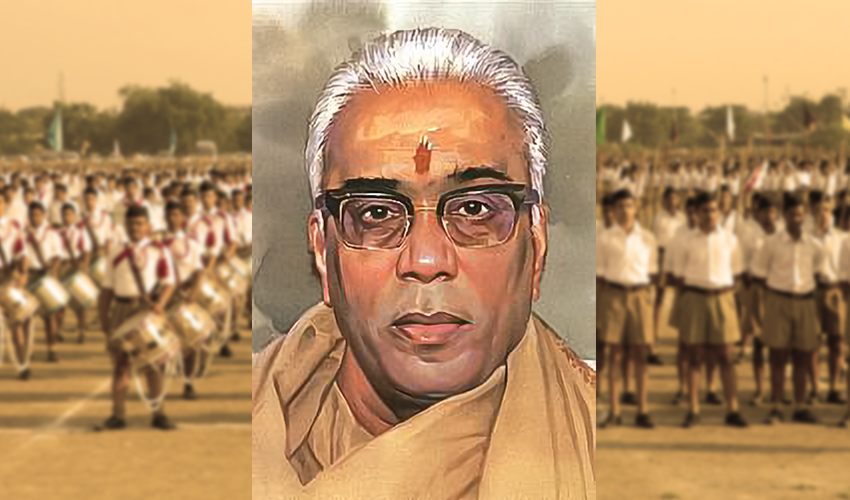
1973 - 1993 Balasaheb Deoras: Kingmaker of the Sangh -
1975 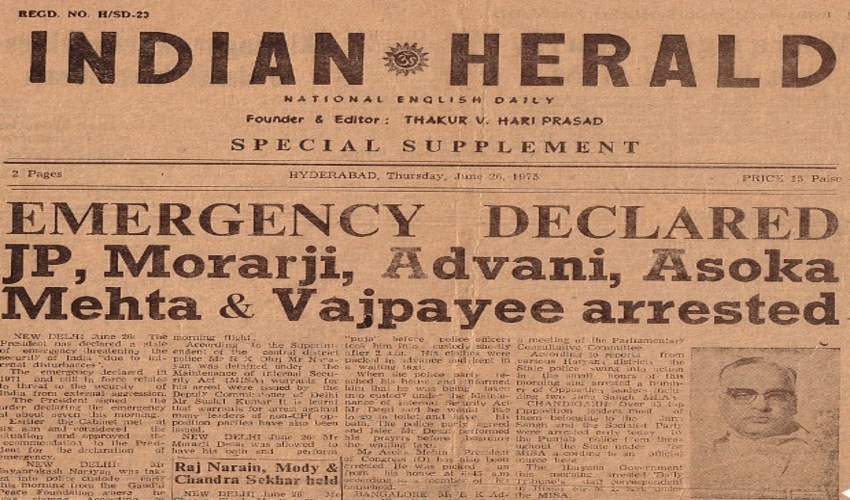
1975 The Emergency Package: Shadow Power -
1975 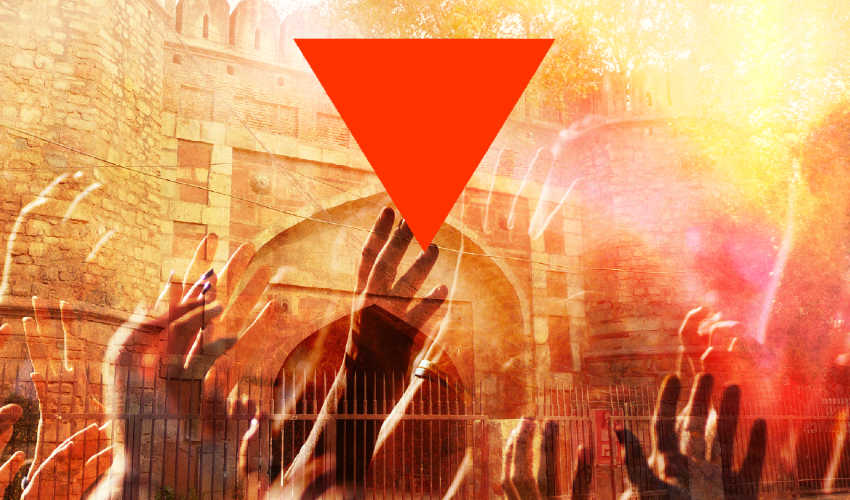
1975 The Emergency Package: The Prehistory of Turkman Gate – Population Control -
1977 – 2011 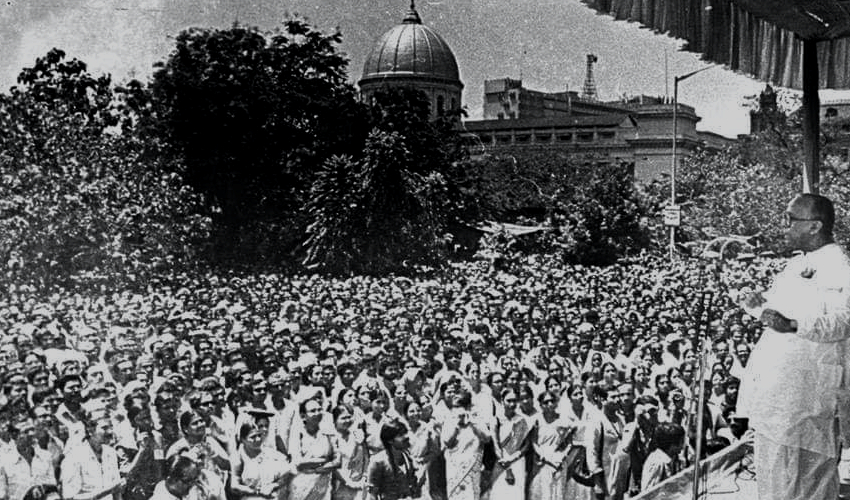
1977 – 2011 Power is an Unforgiving Mistress: Lessons from the Decline of the Left in Bengal -
1984 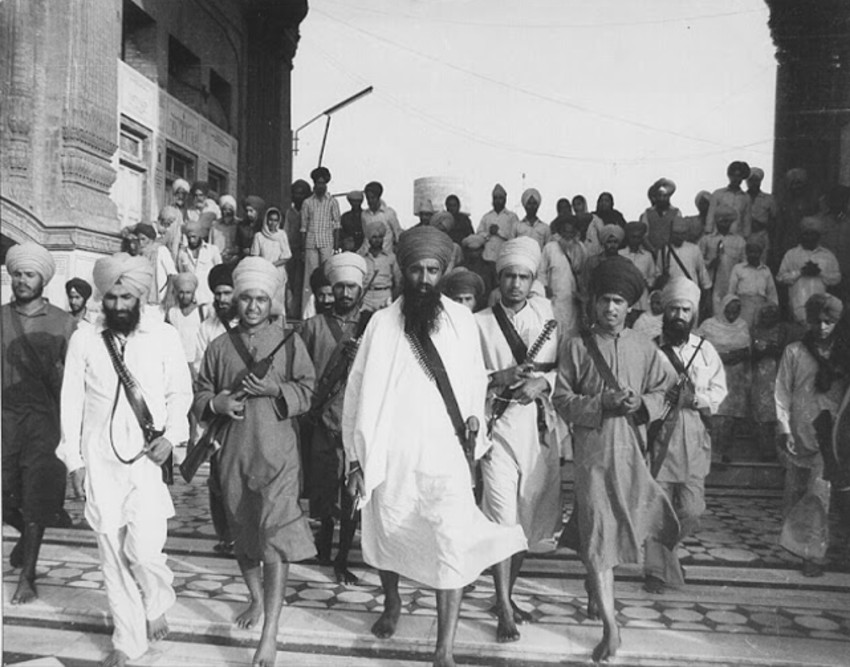
1984 Mrs Gandhi’s Final Folly: Operation Blue Star -
1916-2004 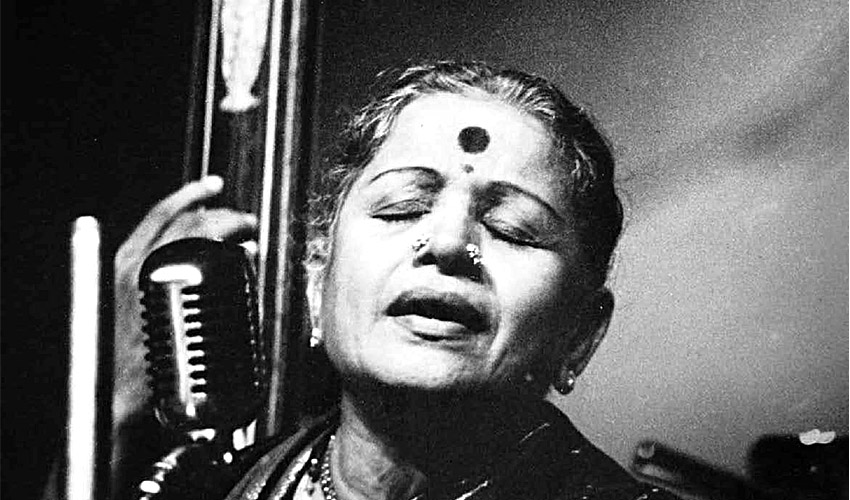
1916-2004 Amjad Ali Khan on M.S. Subbulakshmi: “A Glorious Chapter for Indian Classical Music” -
2008 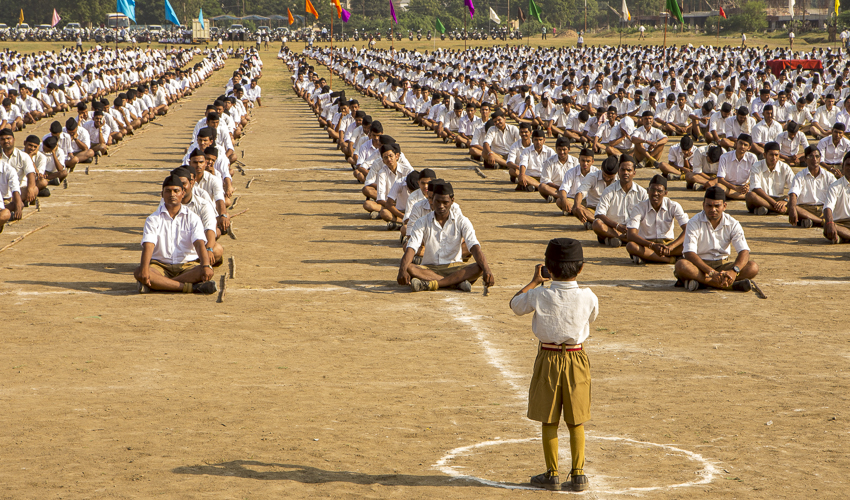
2008 Whose History Textbook Is It Anyway? -
2006 - 2009 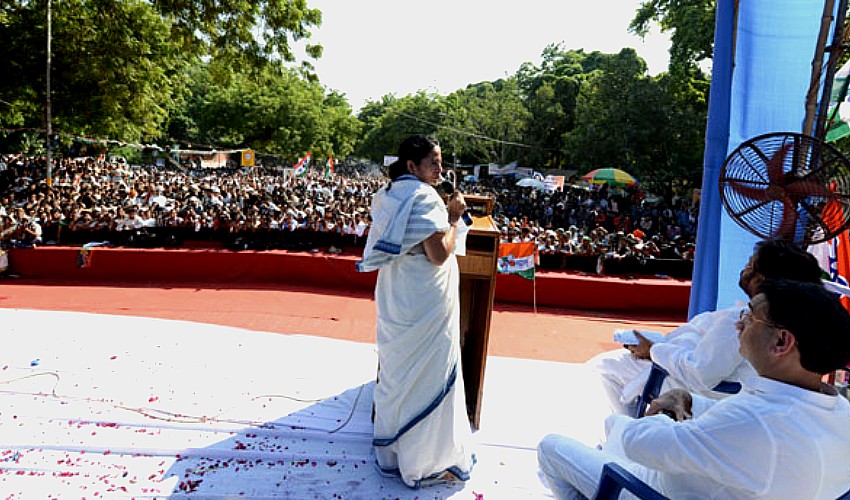
2006 - 2009 Singur-Nandigram-Lalgarh: Movements that Remade Mamata Banerjee -
2020 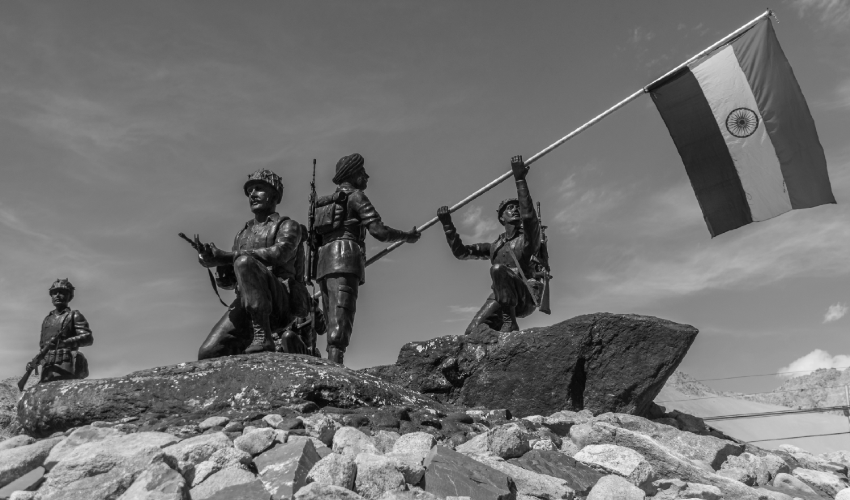
2020 The Indo-China Conflict: 10 Books We Need To Read -
2021 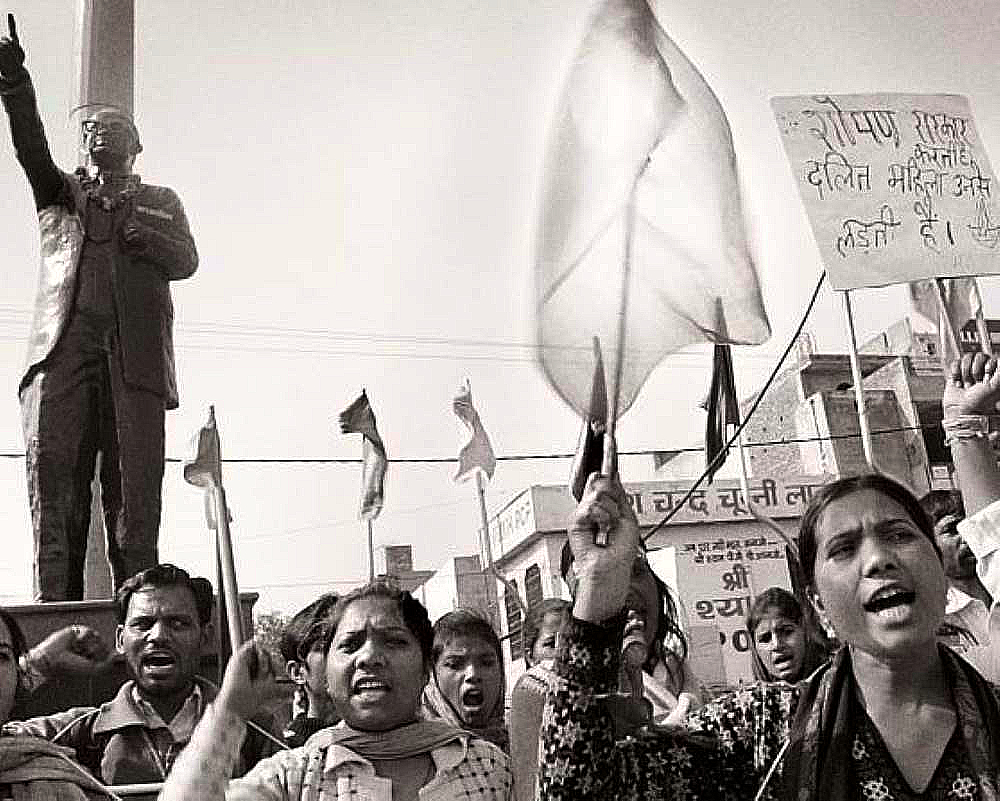
2021 Singing/Writing Liberation: Dalit Women’s Narratives

